Last updated on April 1, 2024

Erhnam Djinn | Illustration by Ken Meyer, Jr
Chronicles defined the way Magic cards would be collected for years to come. It’s directly responsible for the Reserved List’s existence. Why was R&D’s first foray into an entirely reprints set so controversial?
Let’s dive right in and find out!
Chronicles Basic Information
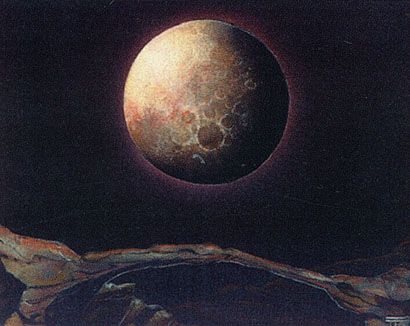
Blood Moon | Illustration by Tom Wänerstrand
1995’s Chronicles was the 12th MTG set, and the first to include only reprinted cards. Originally conceived as a “best of 1994” release, the set gave players access to expensive singles from Arabian Nights, Antiquities, Legends, and The Dark with a heavy skew towards player-favorite Legends. Chronicles was functionally the first Masters set.
Chronicles is a white-bordered set. Wizards used the white borders to denote when a set wasn’t a limited run, meaning they planned to print it until demand dried up. The white borders distinguished the cards from their original printings, helping to conserve the dollar value for collectors.
Set Details
| Set Symbol |  |
| Set Code | CHR |
| Hashtag | |
| Number of Cards | 116 |
| Rarities | 40 Commons, 30 Uncommons, 46 Rares |
What Sets Are Included in Chronicles?
Chronicles includes reprints from Arabian Nights, Antiquities, Legends, and The Dark. These cards were reprinted with white borders and an updated copyright date.
Same Set Symbol, Different Border
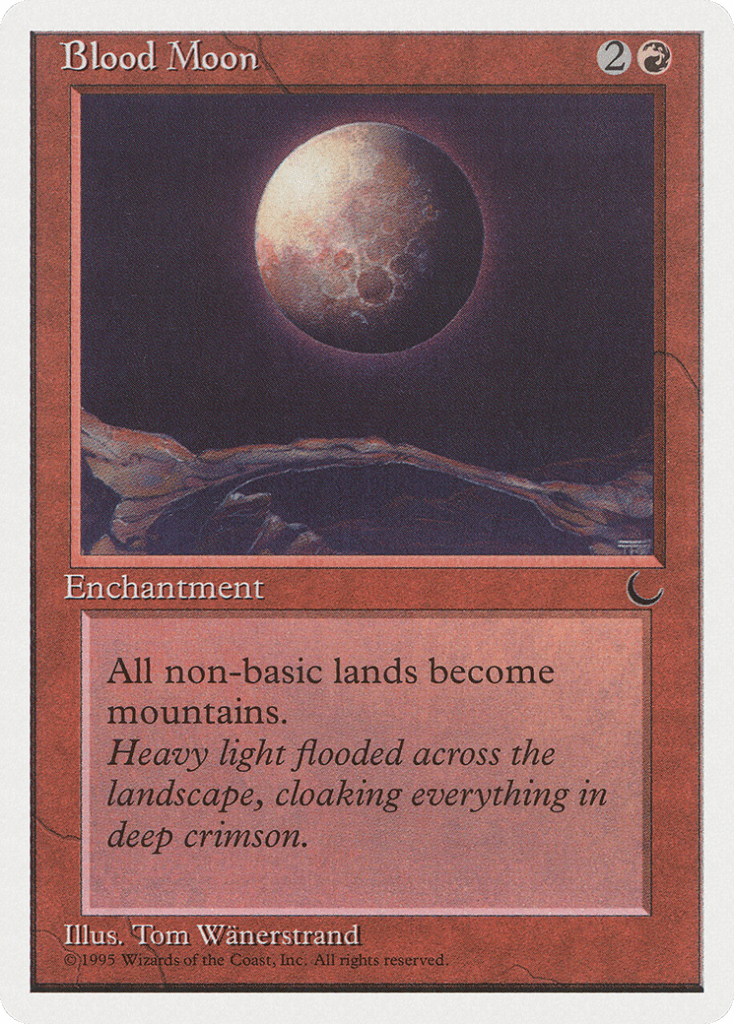
Unlike newer reprint sets, Chronicles cards are reprinted with their original set symbol, but with a white border. Except for Wall of Shadows, which was reprinted with the Antiquities symbol by accident instead of Legends.
Historical Impact

City of Brass | Illustration by Mark Tedin
R&D wanted to improve access to powerful cards available in the game and decided to create their very first reprint set in 1995. This was a very controversial release and has shaped the way cards are reprinted ever since.
The release of Chronicles (and Fourth Edition before that) tanked the price of a lot of high-value cards of the 90s. The cycle of elder dragons from Legends is one example among many. Players didn’t care for their valuable cards becoming worthless overnight, and R&D developed the Reserved List, a list of cards that will never be reprinted or have a functionally identical version printed, in response. R&D’s VP made a statement at the time:
Wizards has no plans for another reprint expansion. We will continue to publish new editions of the Core Set with new and different reprints, as well as include reprints in expert-level expansions. We’re happy with the Standard cardpool size maxing out at around 1500. Two three-set blocks plus one Core Set is just over 1500 cards.
Bill Rose, R&D Vice President
The Reserved List
The Reserved List is defined by five main principles. First, reserved cards will never be printed again in any functionally identical form.
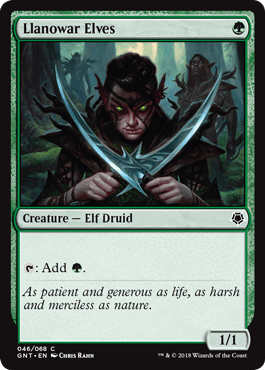

A card being functionally identical to another means it has the same card type, subtypes, abilities, mana cost, power, and toughness. Some functionally identical cards are Llanowar Elves and Elvish Mystic. The cards share the same mechanics in-game and differ only in name.
The exclusion of any particular card from the List doesn’t mean that there are any plans to reprint that card.
All policies apply only to tournament-legal Magic cards in printed form. Wizards has and may continue to print special versions of cards not meant for regular gameplay, like oversized cards. The restriction also doesn’t apply to non-redeemable digital cards in Magic Online or MTG Arena.
The Contents of the List
The Reserved List originally included all cards from Alpha and Beta that hadn’t already been reprinted, as well as all uncommon and rare cards from Arabian Nights, Antiquities, Legends, and The Dark that hadn’t seen reprints yet. WotC reserved the right to reprint cards from Fallen Empires, Ice Age, and Homelands, but they committed to capping their white-border rare reprints to 25% of the rarest cards (meaning they appear at the lowest frequency on the rares print sheet).
More cards were added to the Reserved List as new Core Sets were released. Any rare not considered eligible for a reprint in a Core Set was automatically added to the Reserved List and would never be reprinted in a functionally identical way.
This policy was revised in 2002. Wizards decided no cards from Mercadian Masques on would be automatically reserved. Commons and uncommons from Limited Edition were removed from the List due to overwhelming public support. Feroz's Ban was also removed from the Reserved List as a mistaken inclusion from the start.
Reprints in Premium Products
Finally, and most recently, WotC committed to not reprinting Reserved List cards in premium products like Duel Decks: Phyrexia vs. The Coalition with Phyrexian Negator (technically this is a Magic Online-only promo) as well as From the Vault: Relic’s Karn, Silver Golem and Mox Diamond.
In 2010 Wizards relented to the negative feedback from Duel Decks: Phyrexia vs. the Coalition and committed to not reprinting Reserved List cards in premium products.
The decision to entirely avoid reprint sets was revised with the release of Modern Masters in 2013. Since then we’ve seen more than our fair share of reprint sets; Double Masters, Ultimate Masters, Eternal Masters… The list is immense at this point.
Set Mechanics
Chronicles was designed to show the best that Magic had to offer at the time. As a supplementary “basic set,” it featured mainly standard effects of the time that were popular and synergistic.
Some of those abilities have gone by the wayside since then, so let’s get a refresher!
Banding
First and foremost is banding. Banding is a static ability that basically allows a player to ground banding or “bands with other” cards when they attack. The band is blocked as a group, and the attacking player assigns the damage of the defending creatures. The same is true for creatures blocking in a band.
Banding is no longer printed on regular cards because it’s a confusing mechanic that lends itself to a playstyle that’s no longer relevant in Magic. There used to be a deeper focus on complex advantages in combat, but not so much anymore.
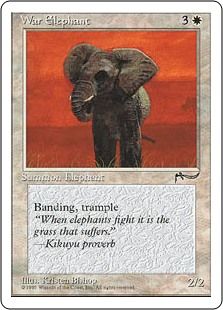
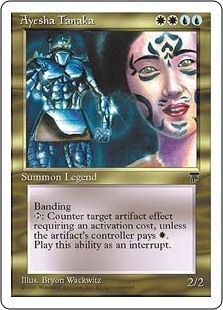
War Elephant and Ayesha Tanaka are the only two cards with banding in Chronicles.
Rampage
Rampage is one of my favorite defunct abilities. A creature with rampage X gets +X/+X for each creature blocking it beyond the first. 90s Magic had a stronger focus on subtle combat advantages and “trading up” into your opponent’s creatures, and rampage made it difficult to pile a bunch of weaker creatures on top of something like Craw Giant.
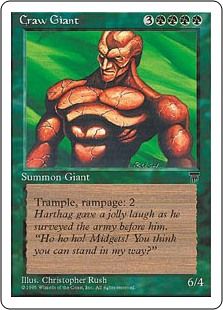


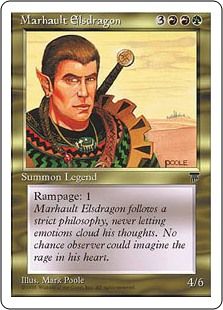
Four rampage cards were reprinted in Chronicles: Craw Giant, Chromium, Gabriel Angelfire, and Marhault Elsdragon.
Legends
Chronicles' reprints were heavily skewed towards Legends. A full 20 legends made their way into the set. While these legendary creatures may pale in comparison to the contemporary commanders of our time, they were powerful game-ending spells back in the day.
The legend rule worked differently at the time. They were symmetrical (checking both your field and your opponent’s) on top of being restricted until Ice Age’s release, meaning you could only include one copy of each unique legend in your deck.
Full Card List
White
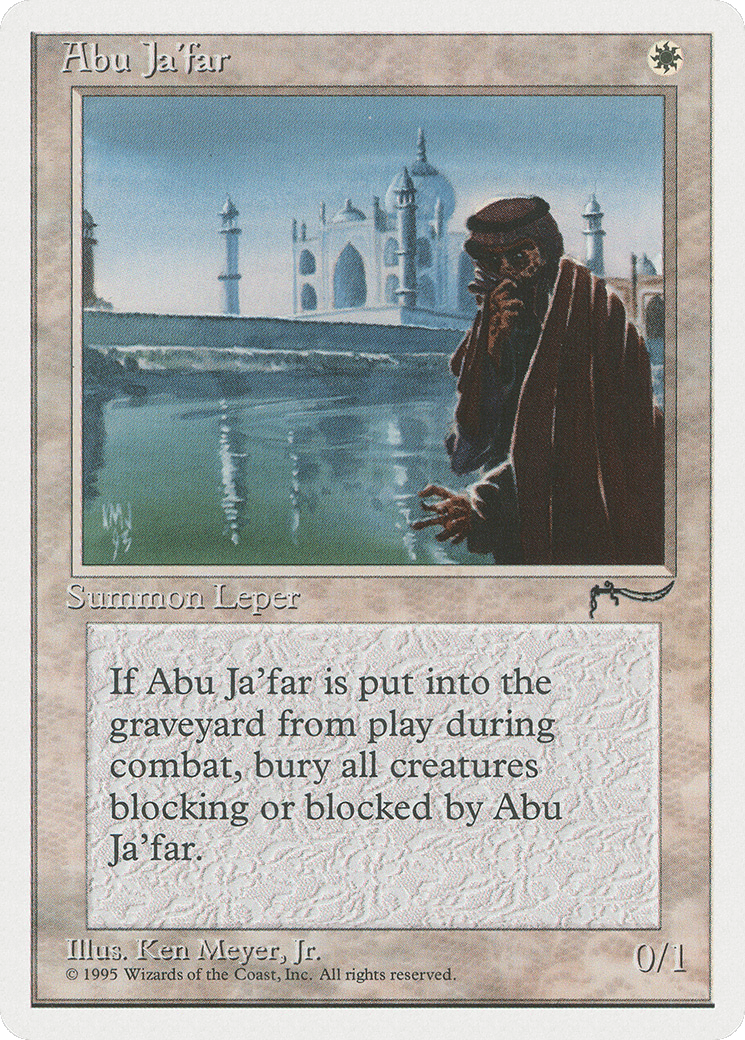
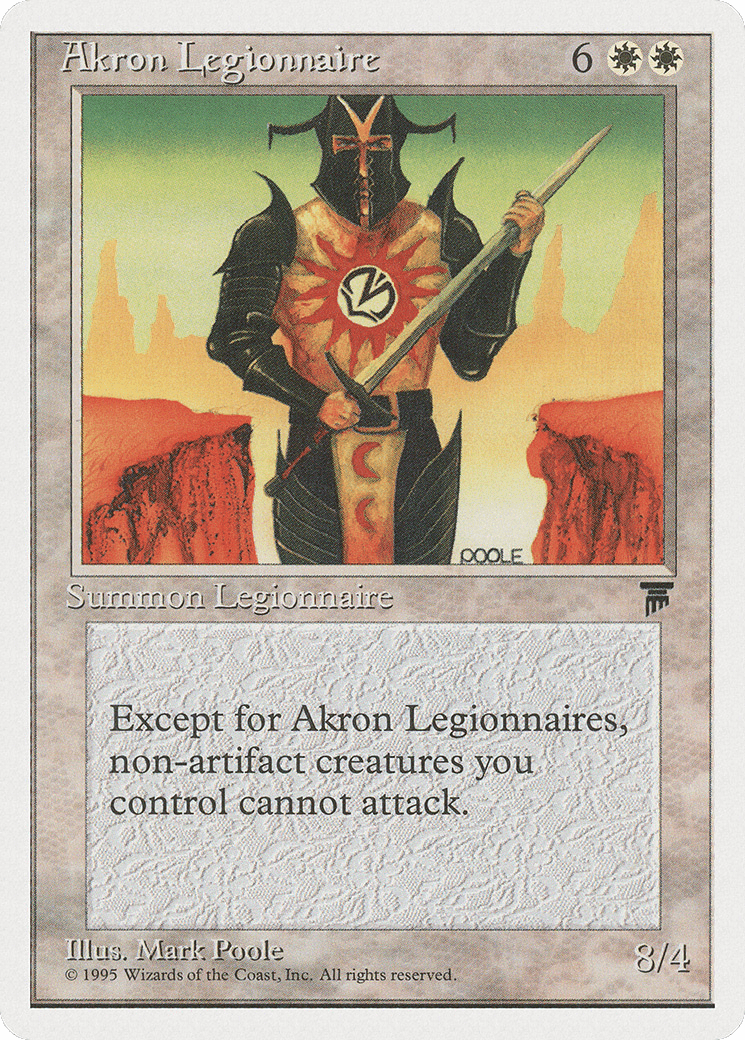
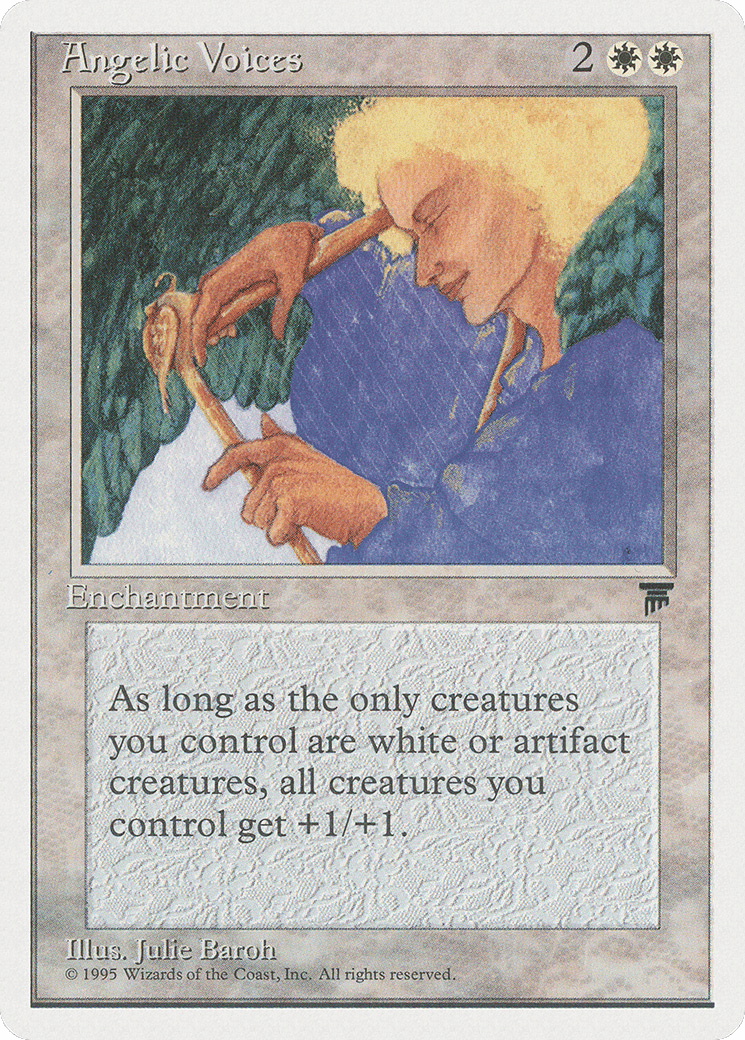

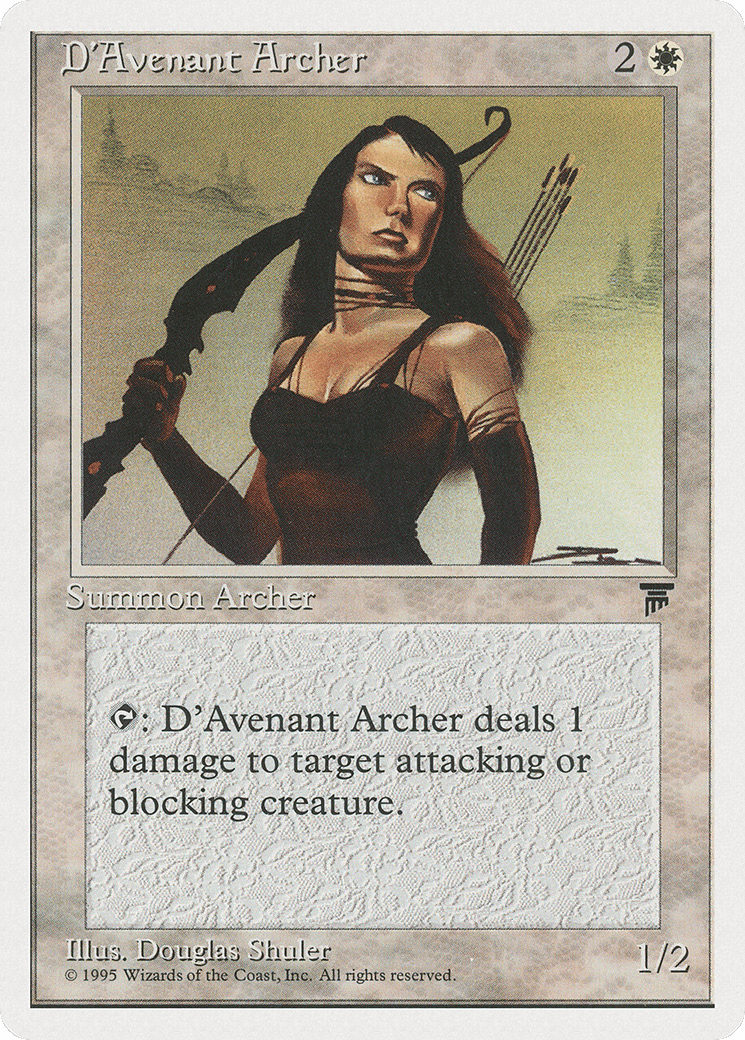
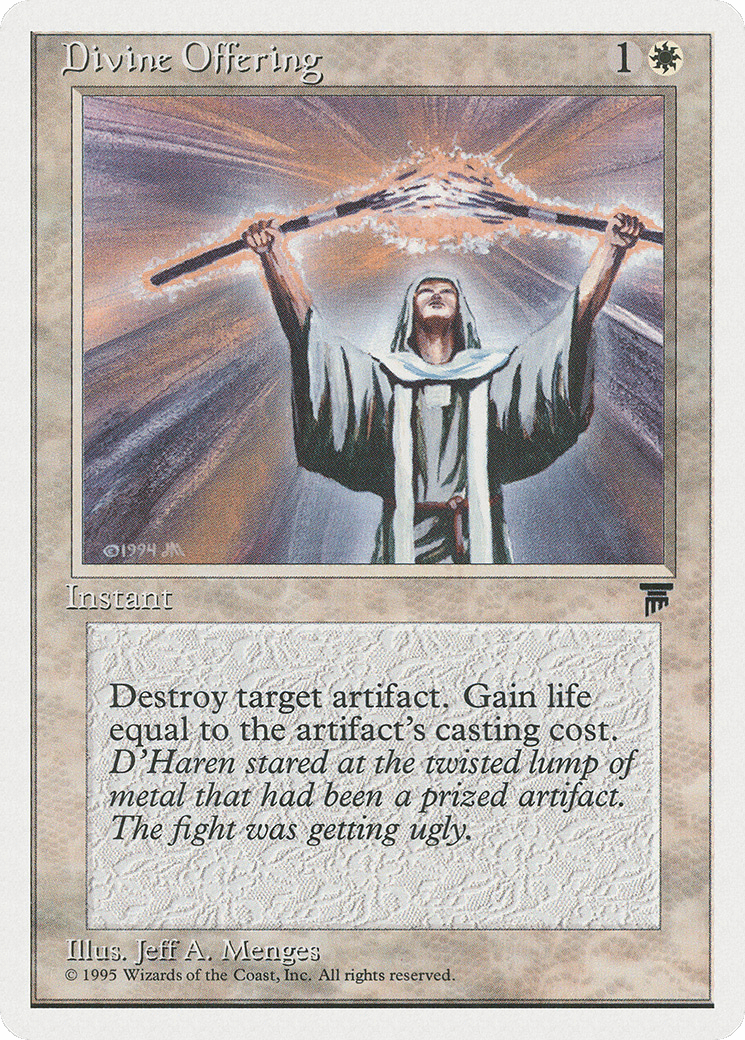
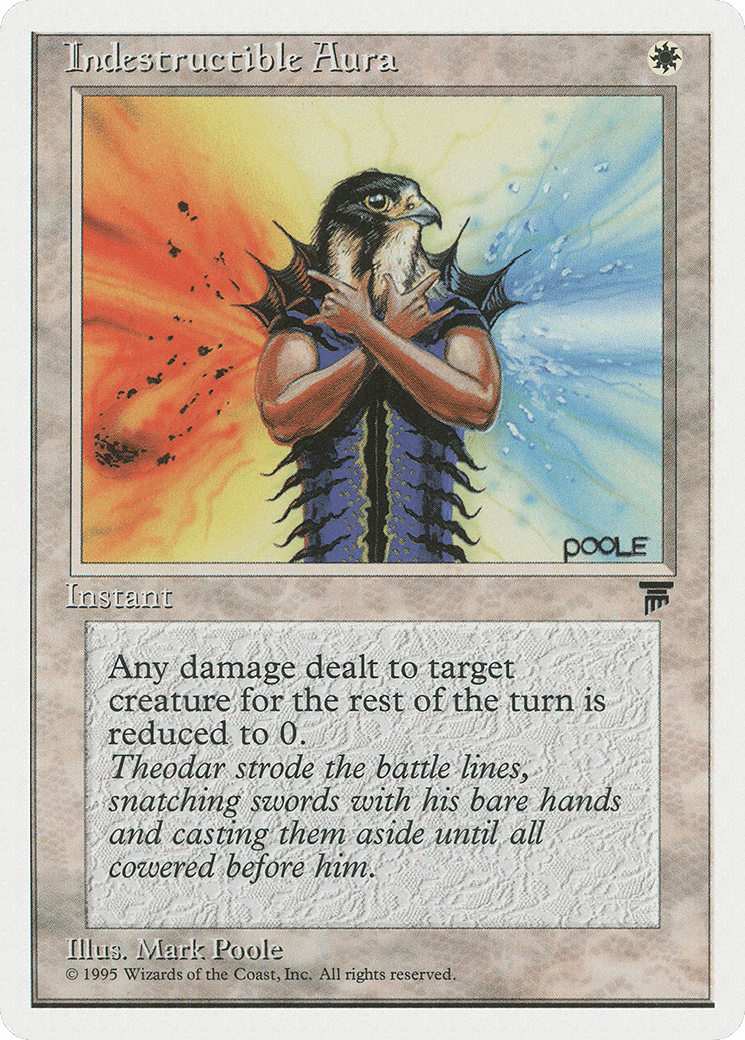
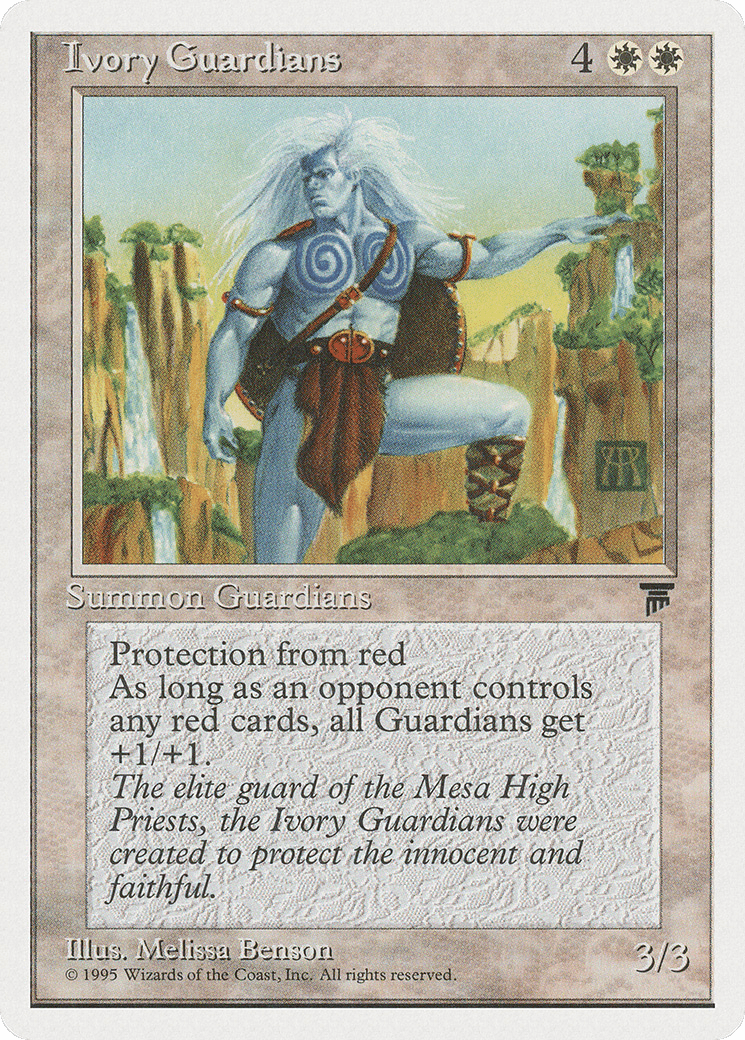
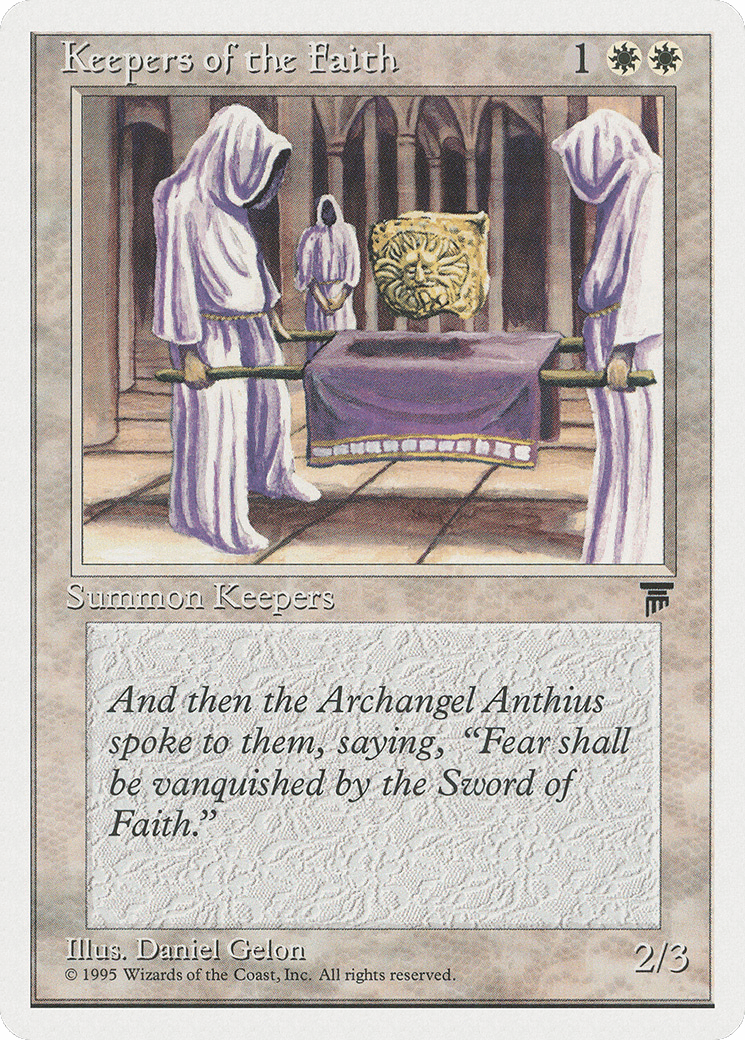


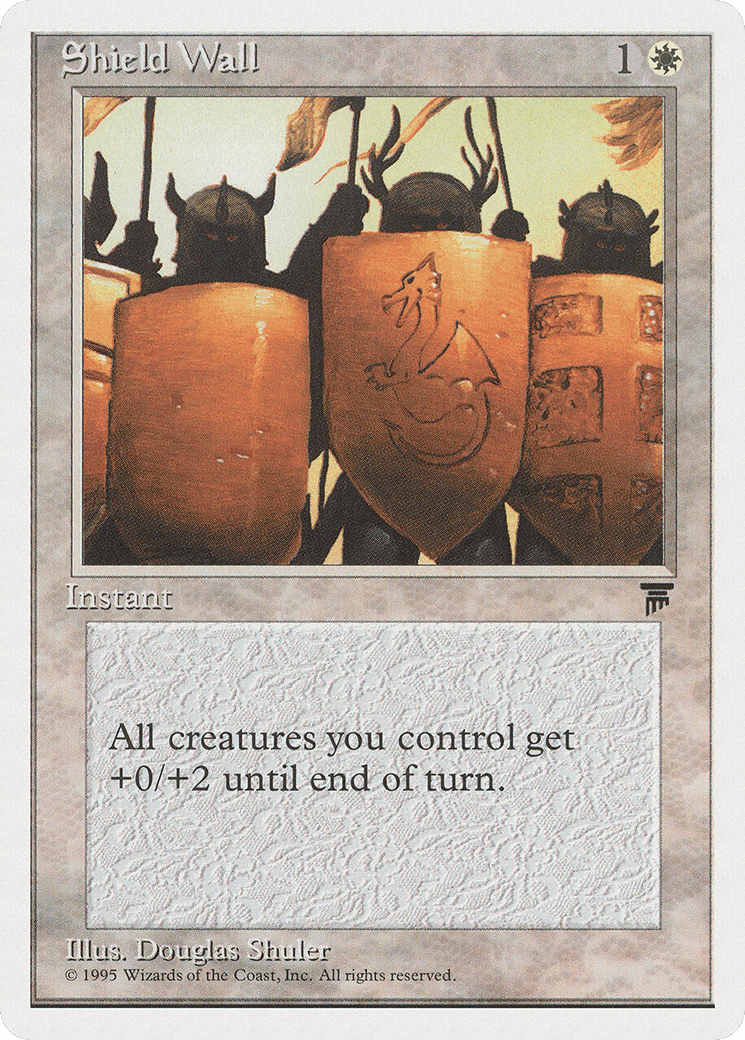
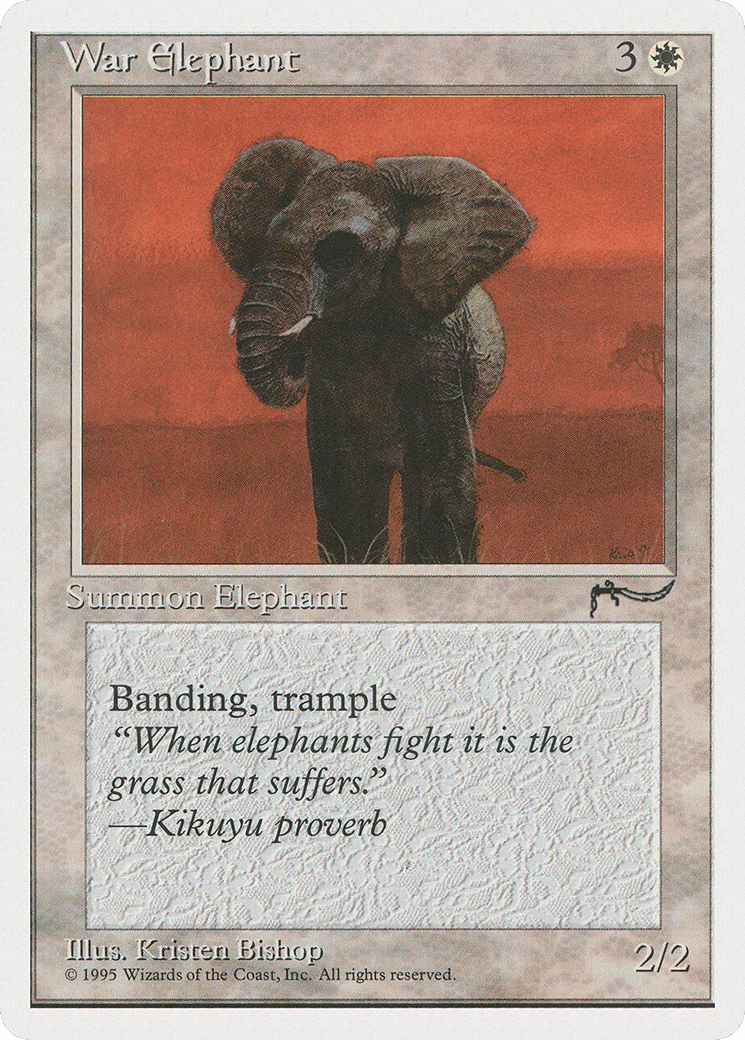
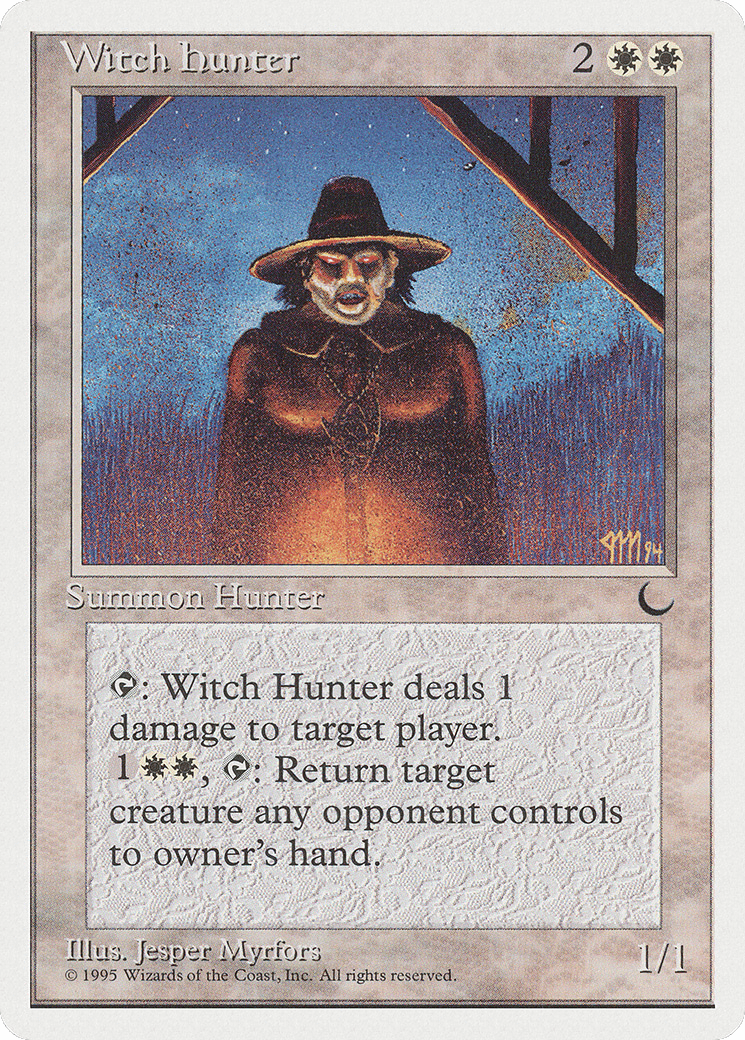
Blue
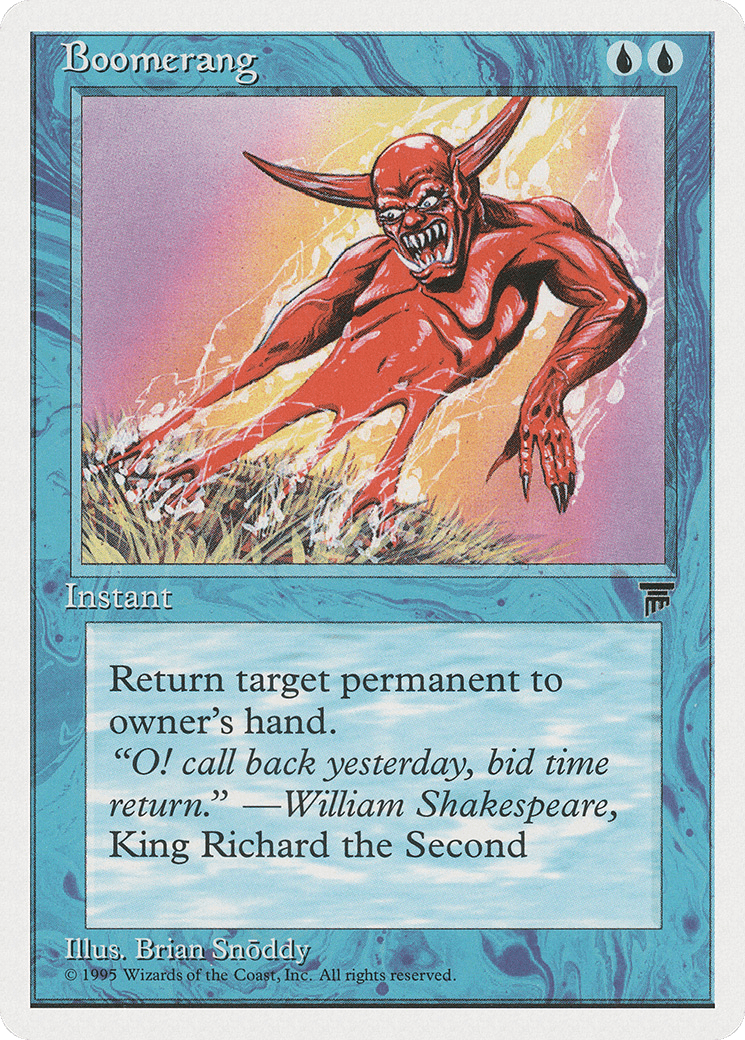


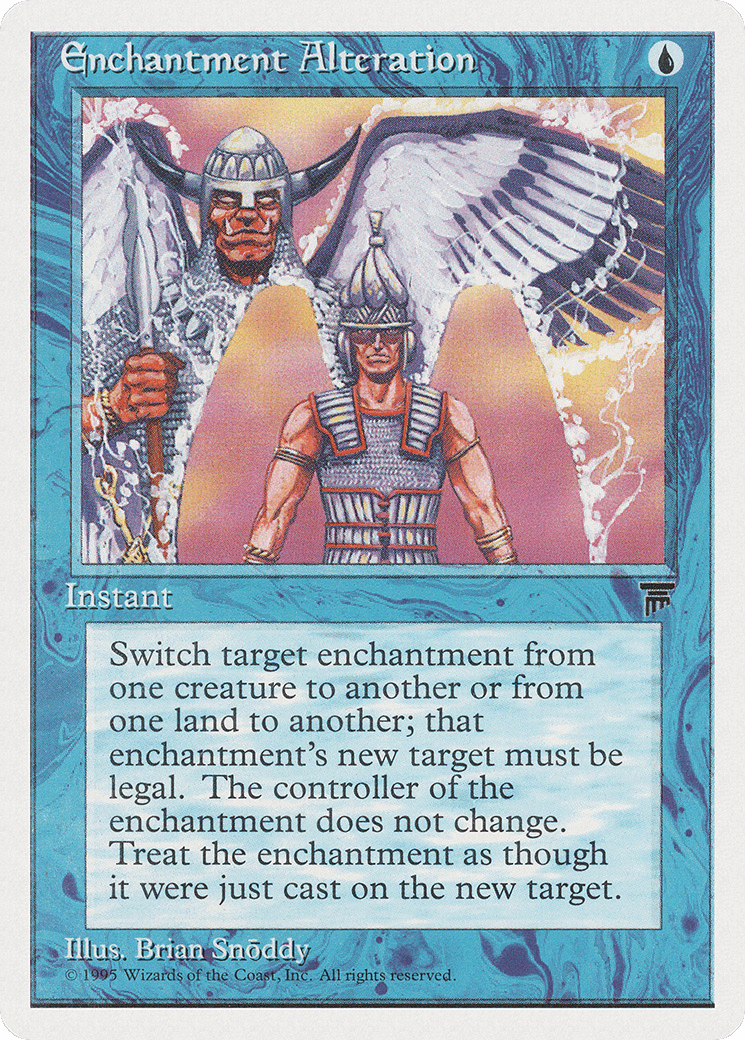
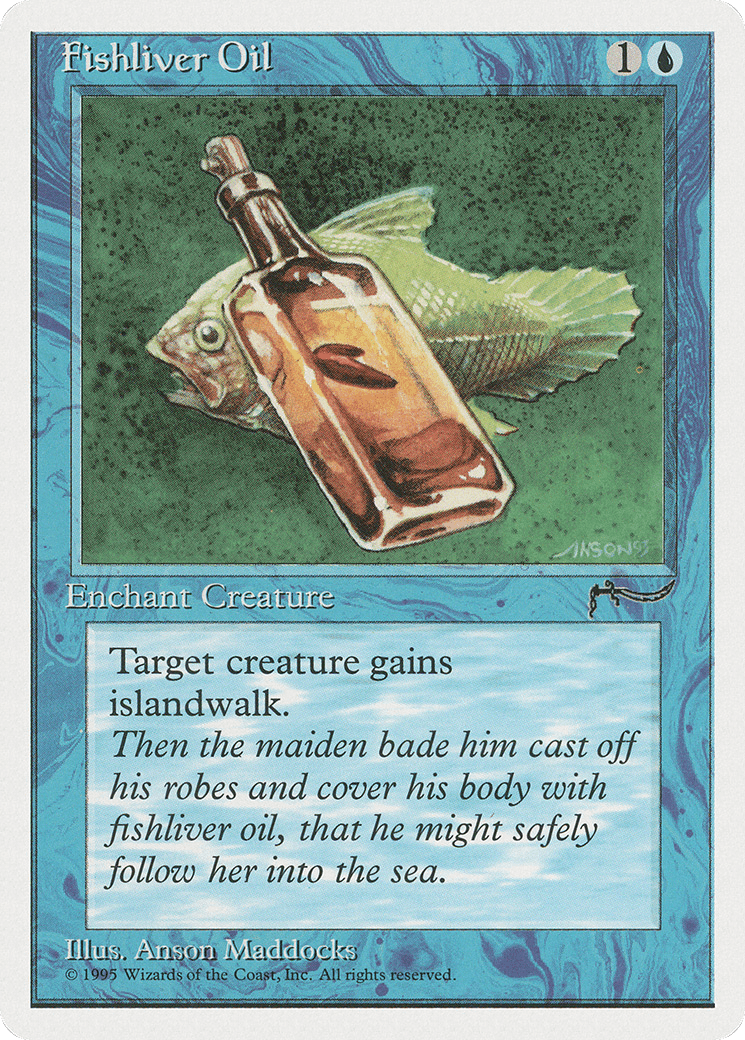
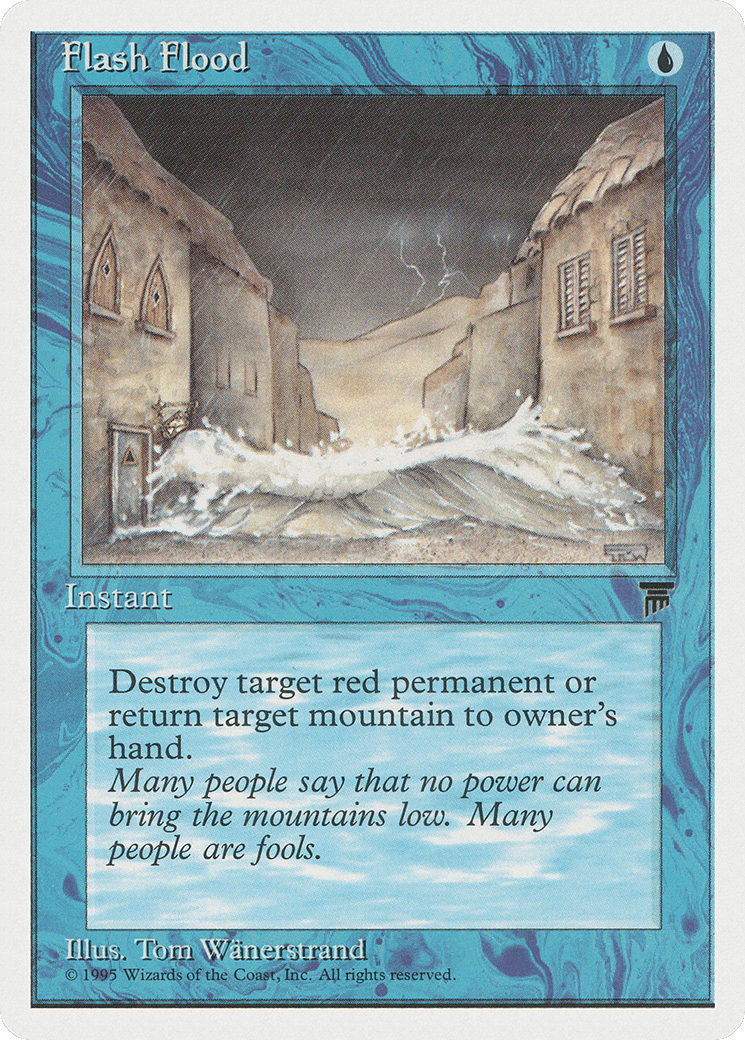
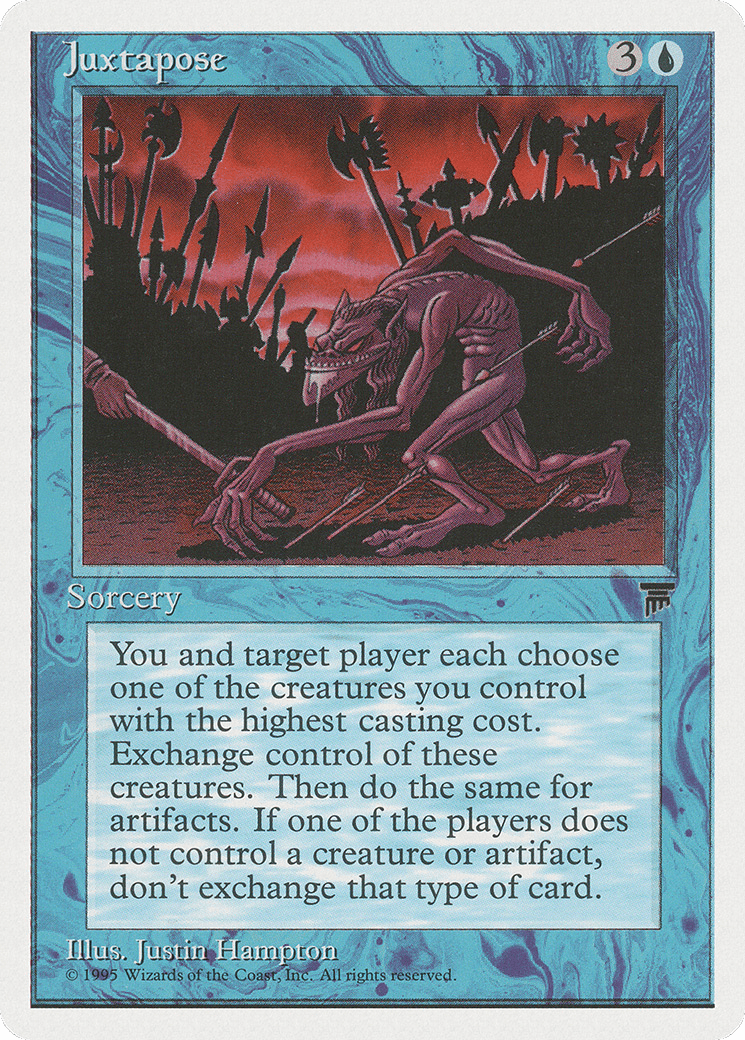
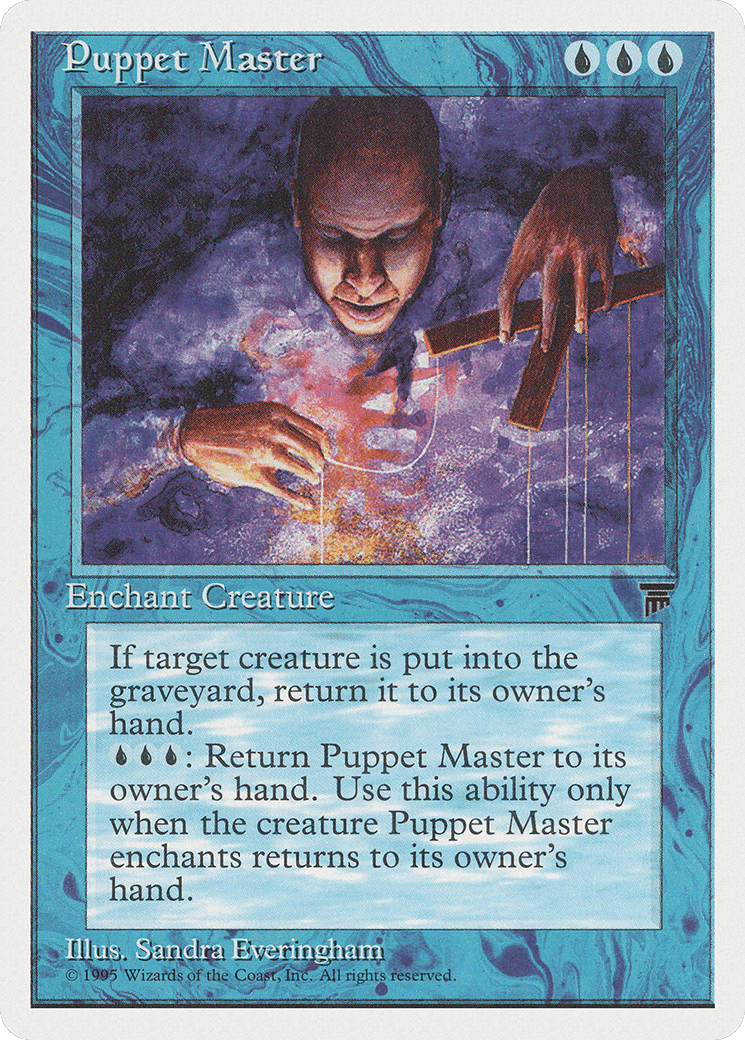
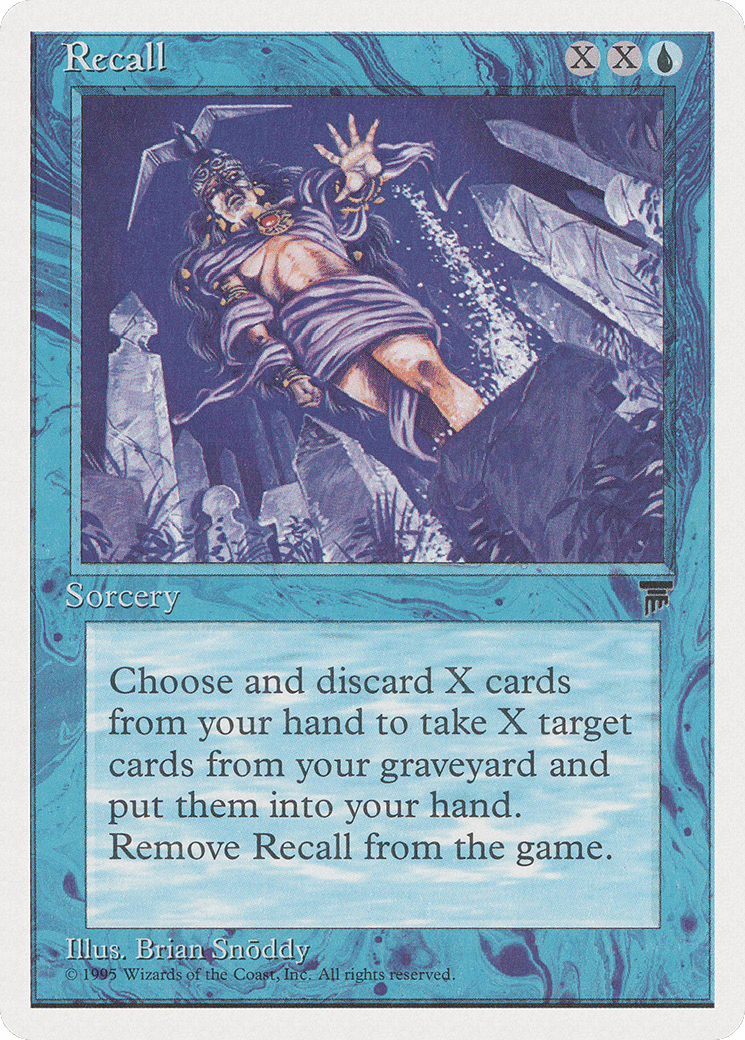
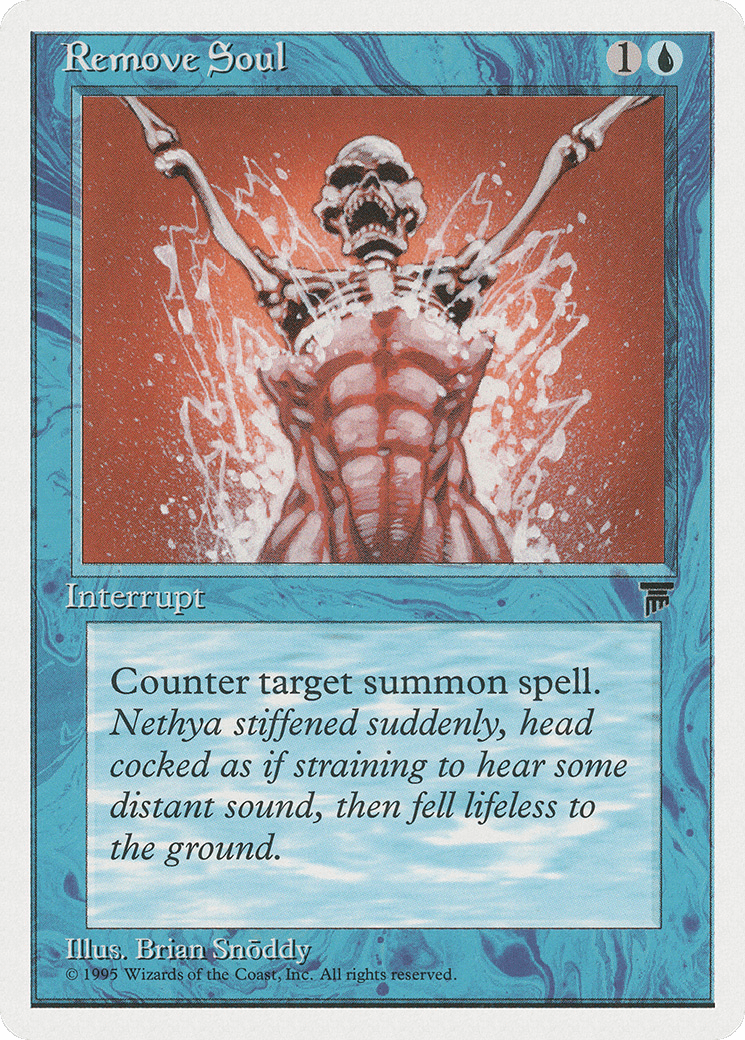

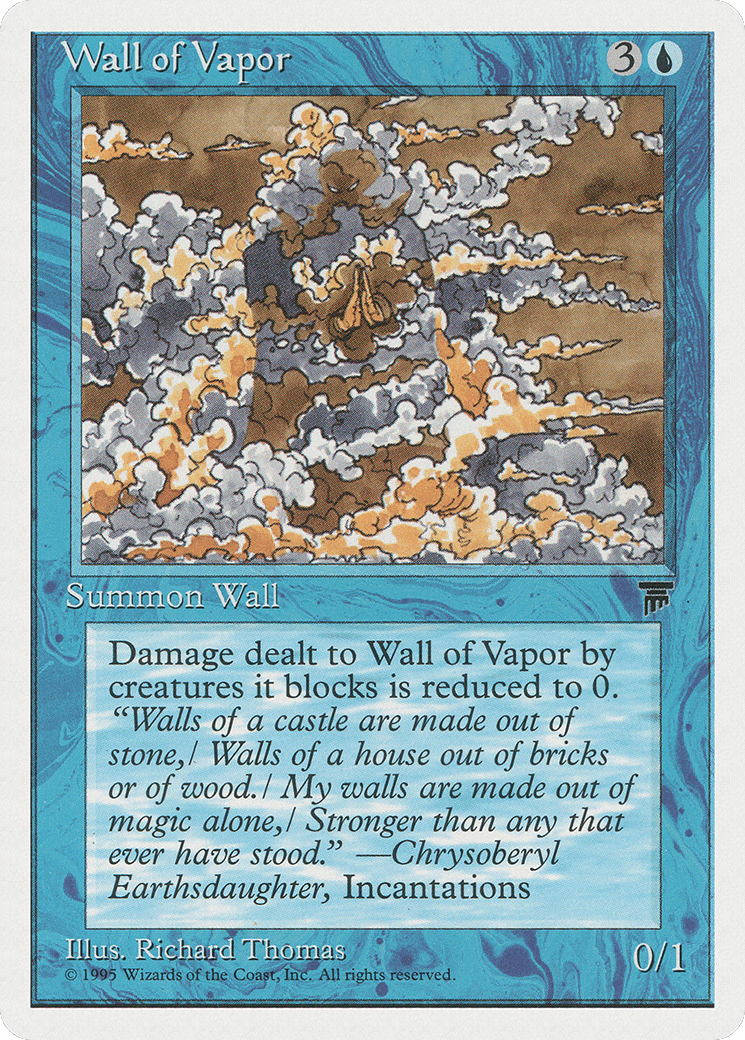

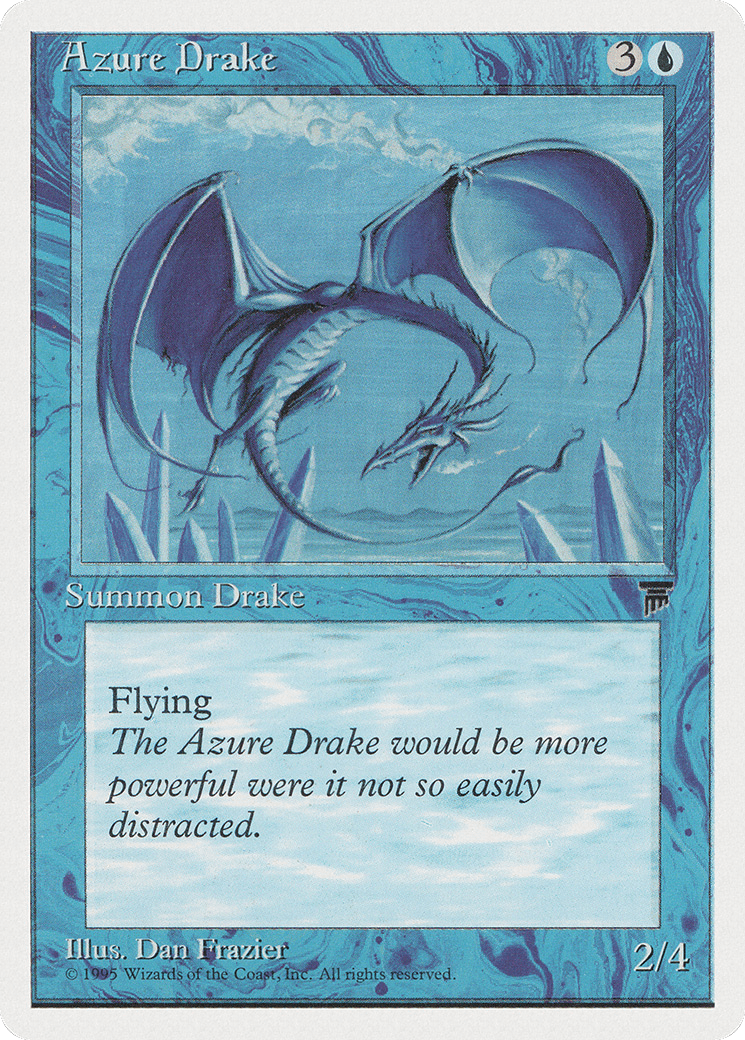
Black
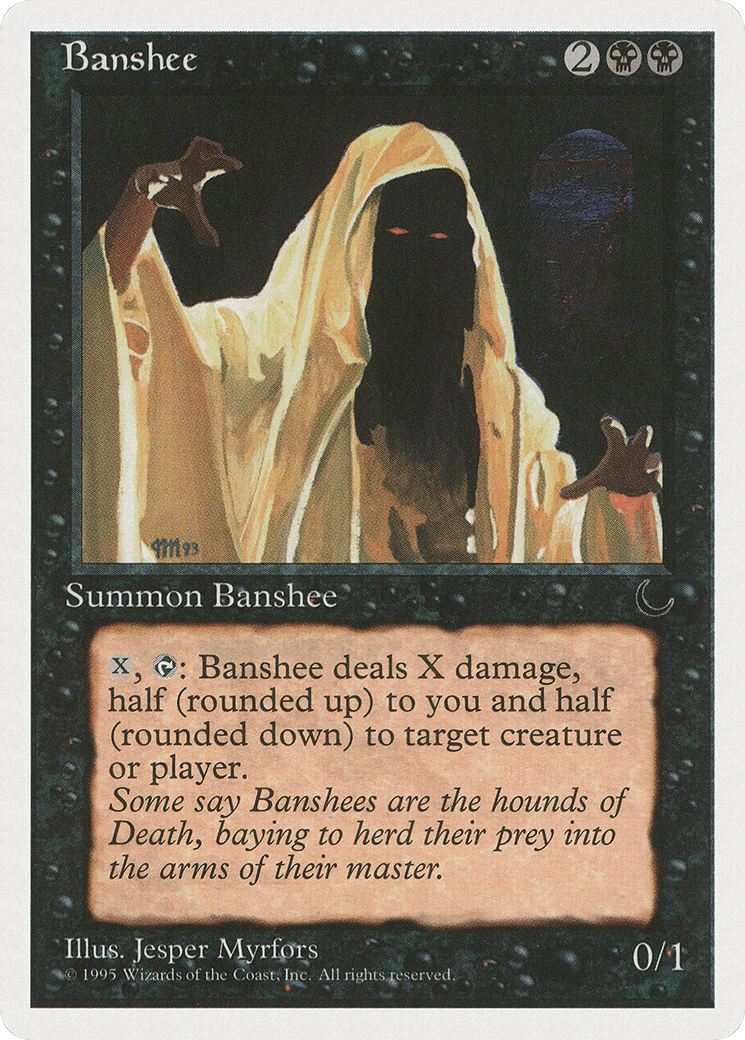
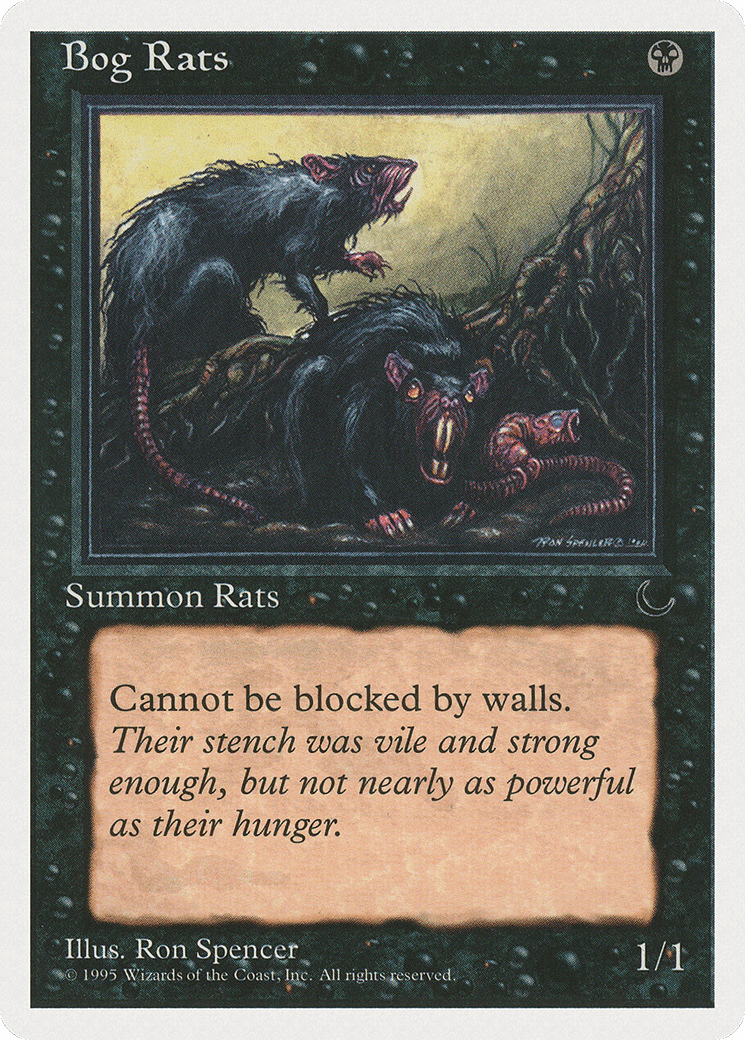
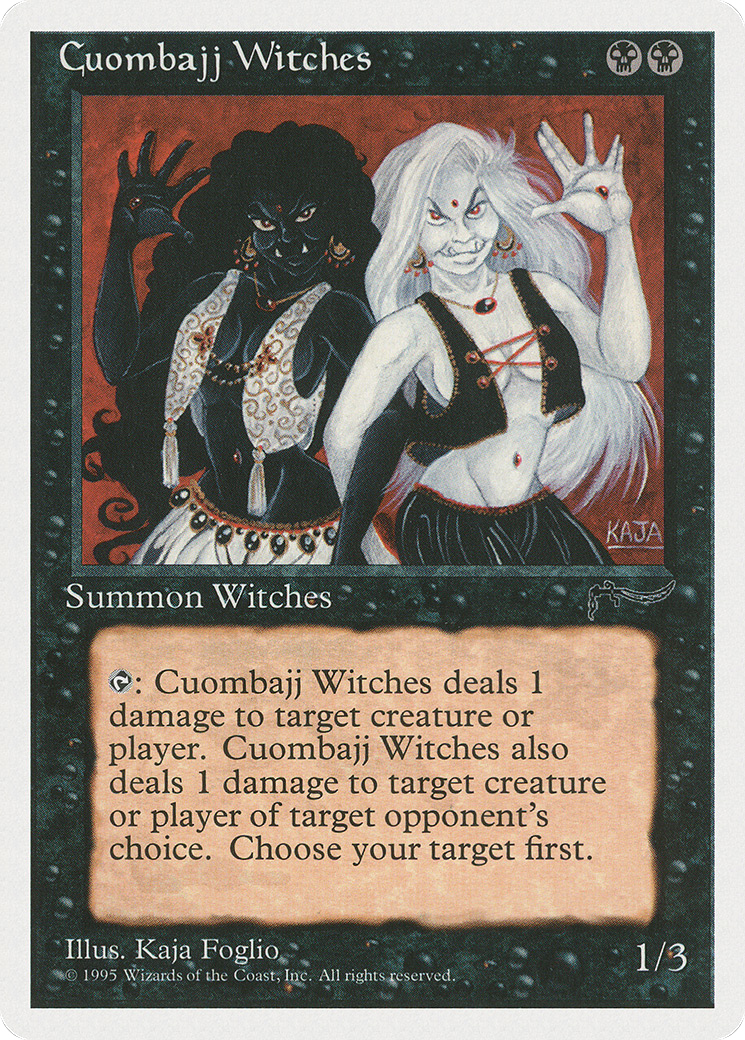
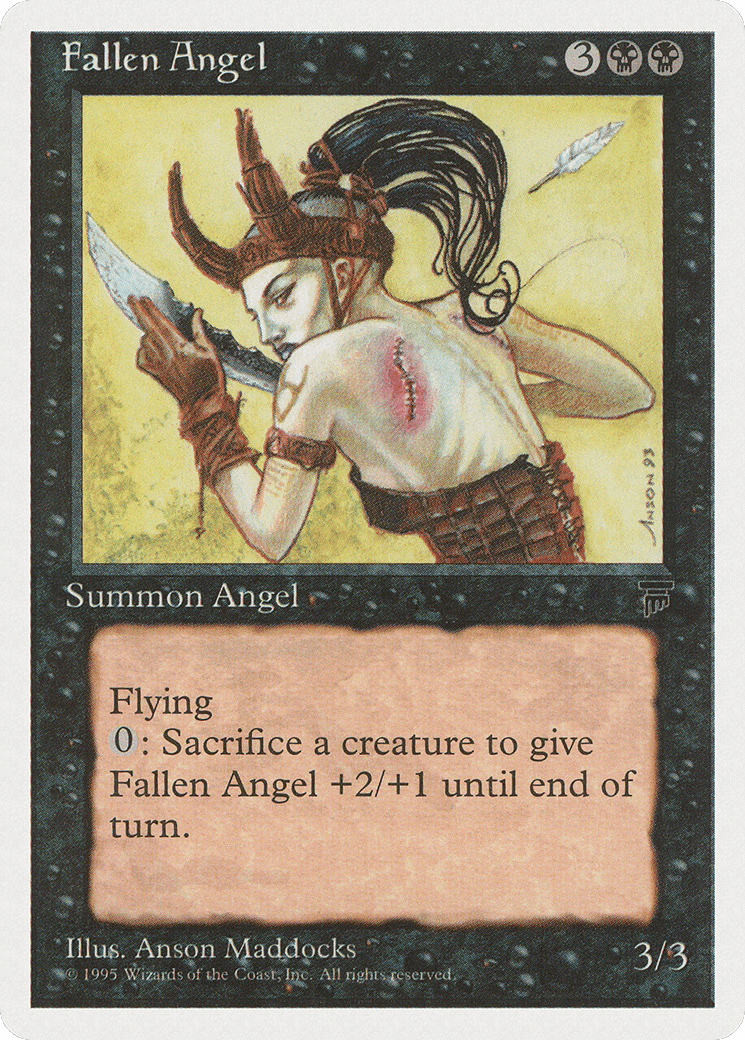

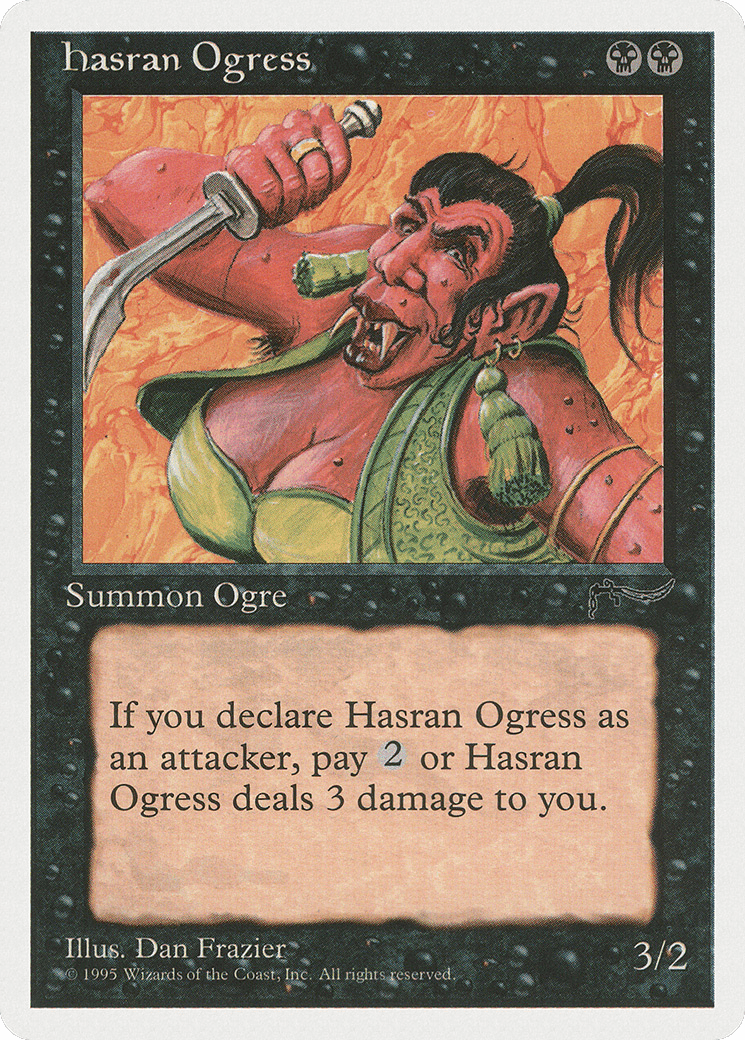
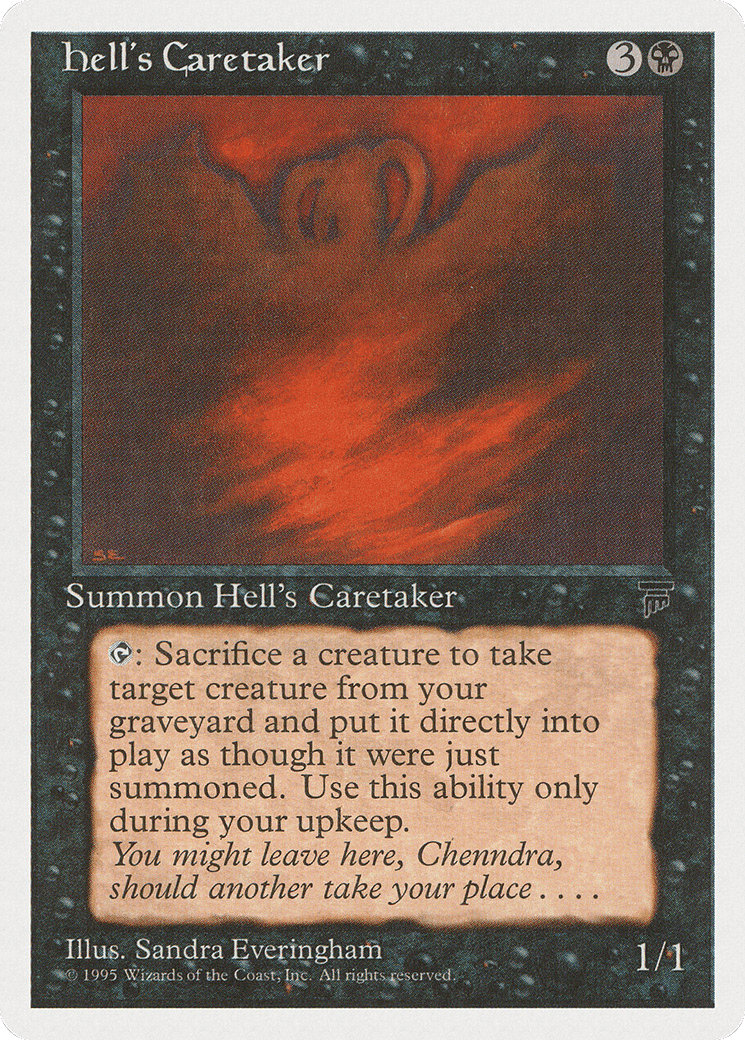


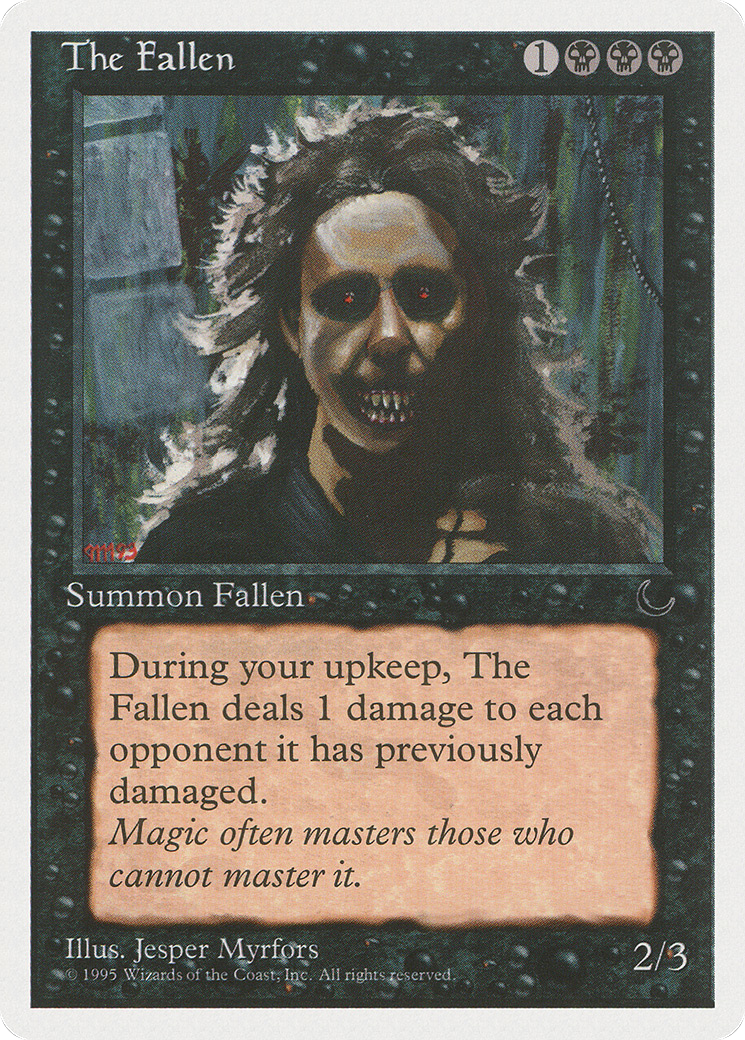


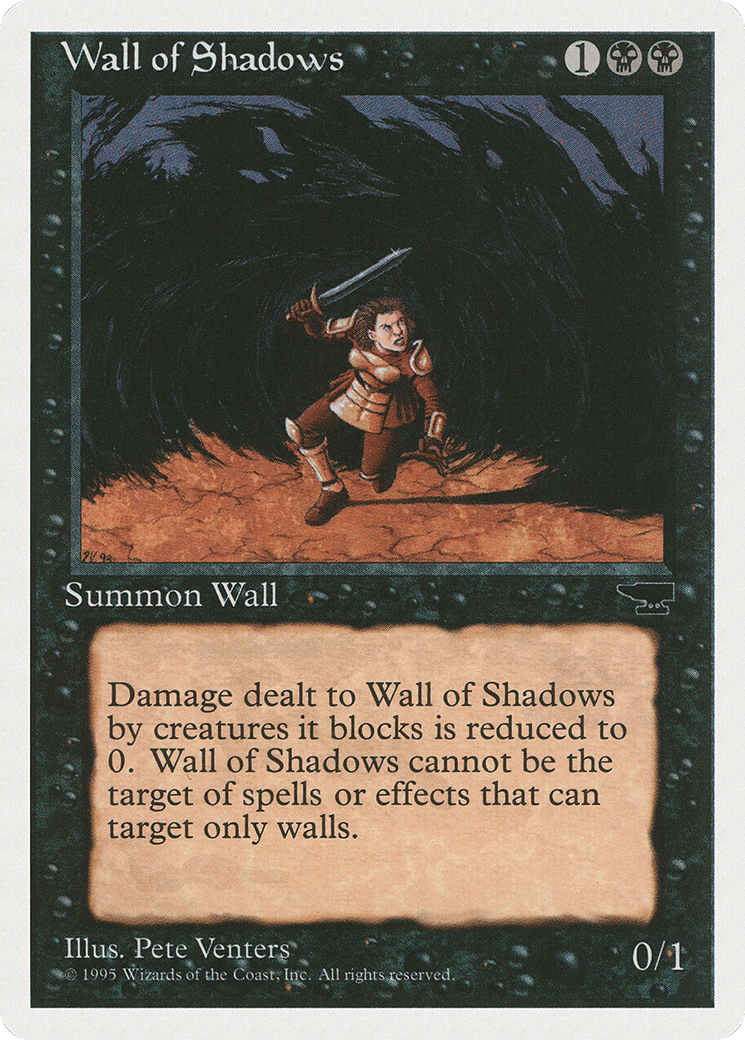

Red
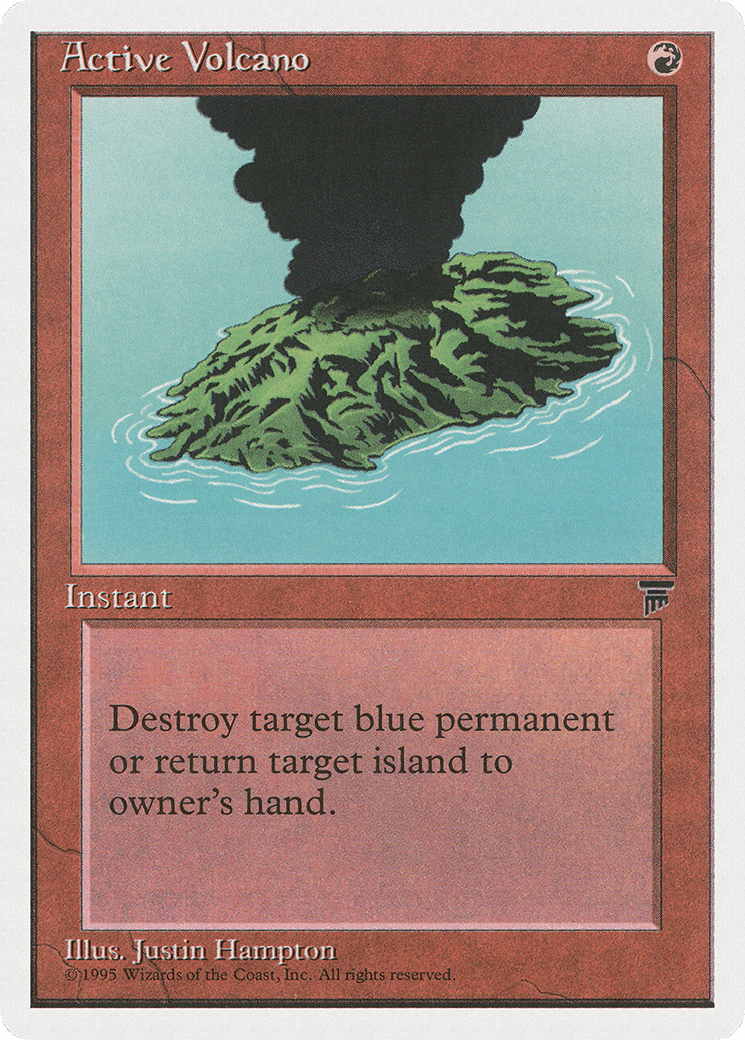
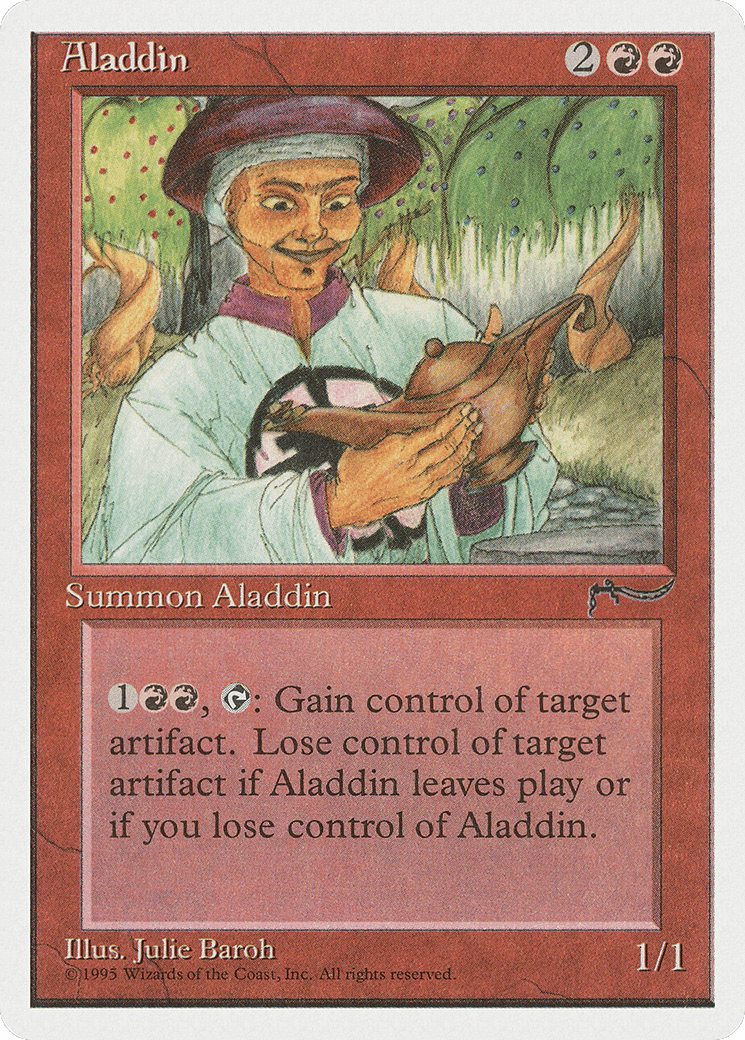


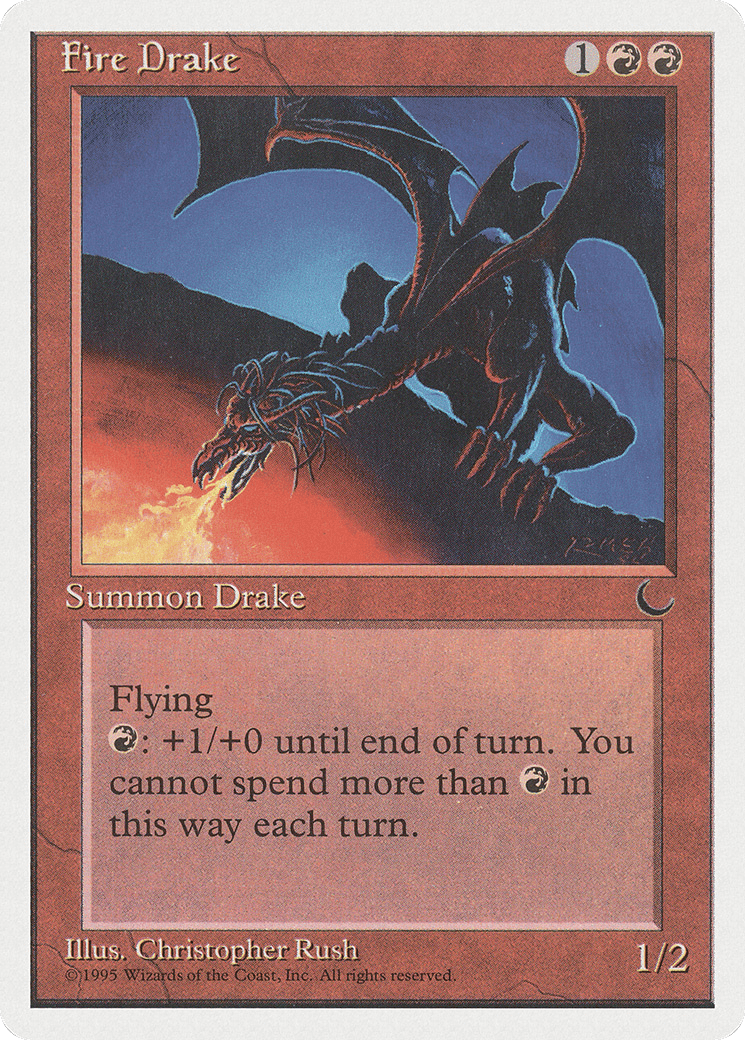
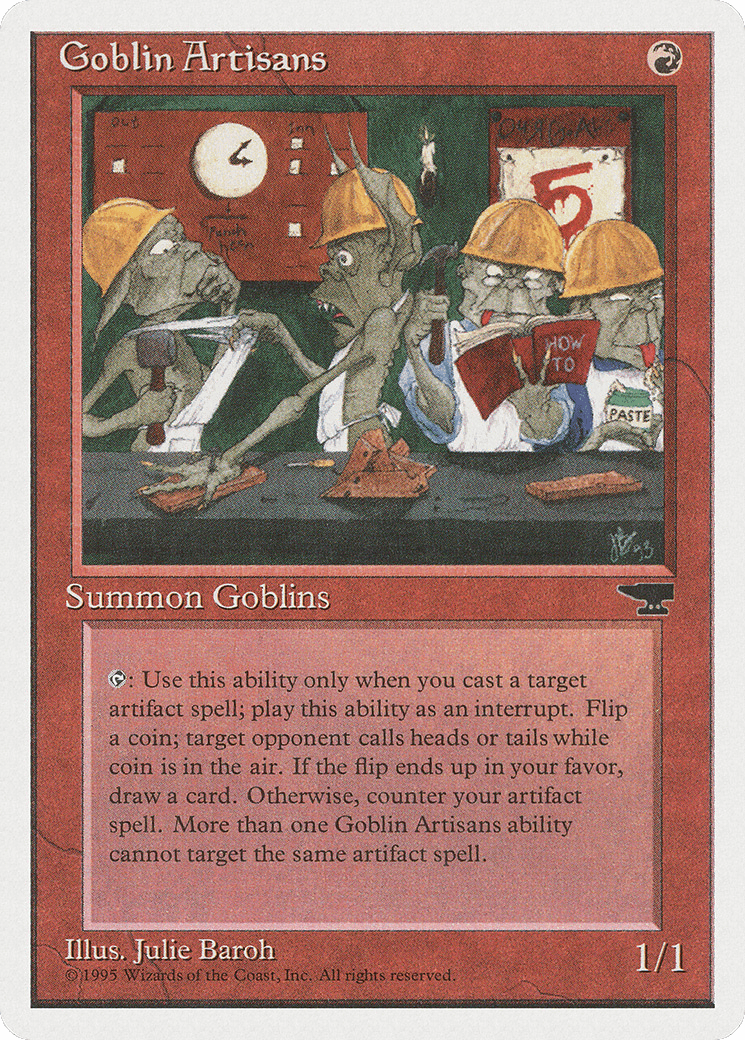


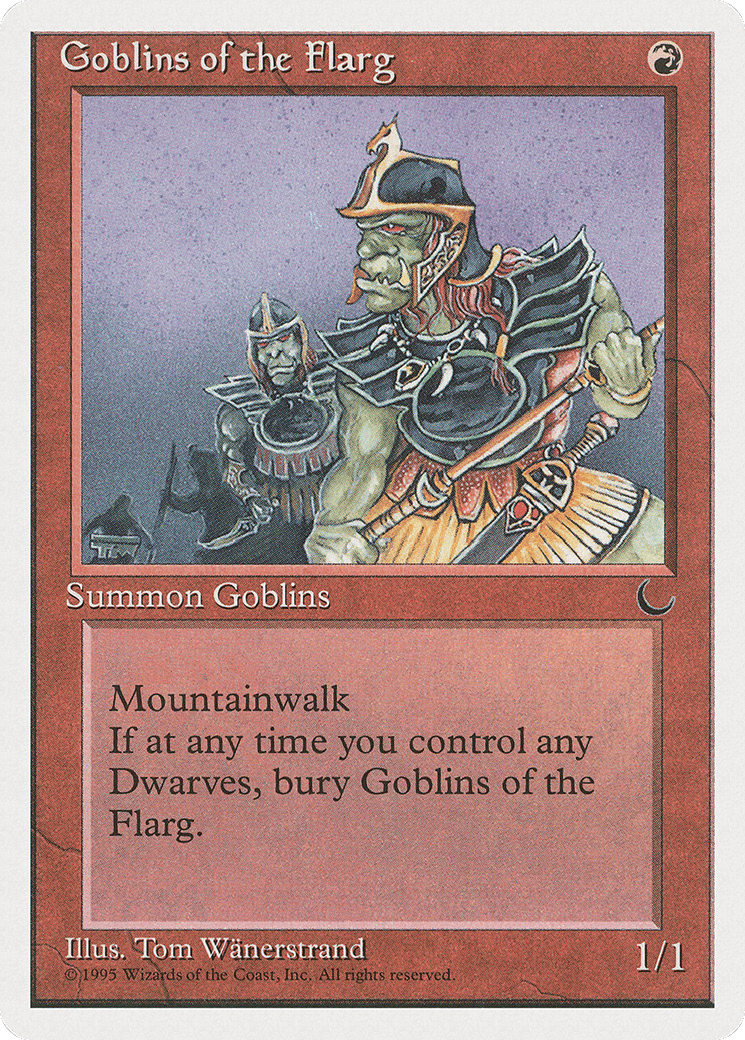

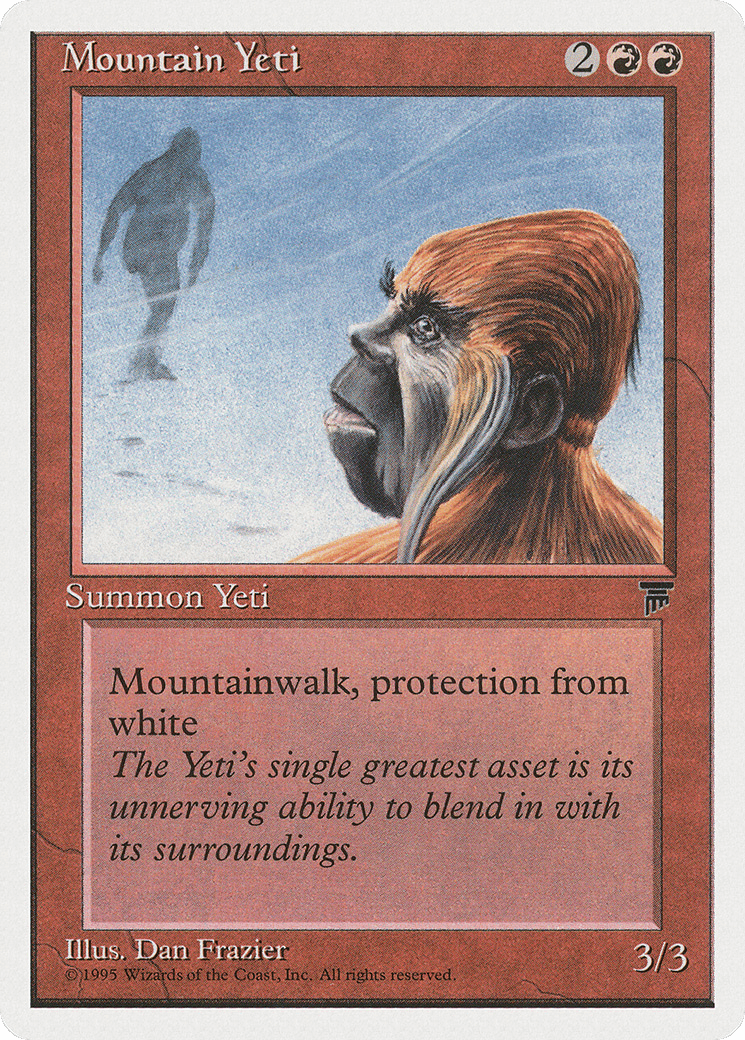
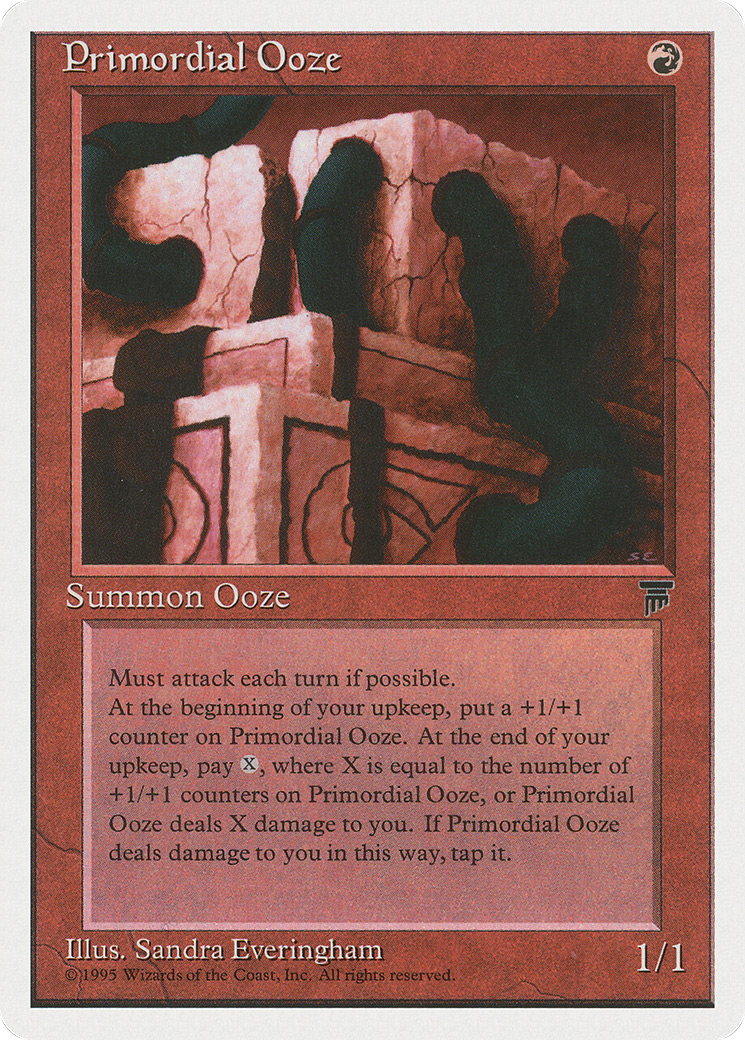

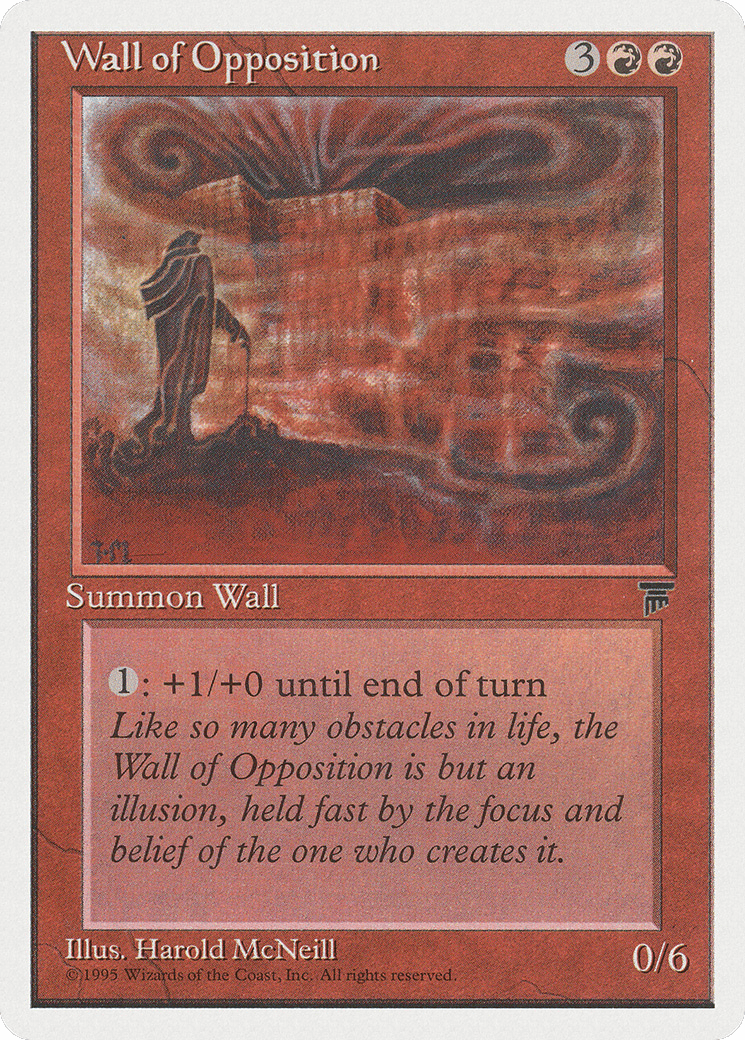
Green
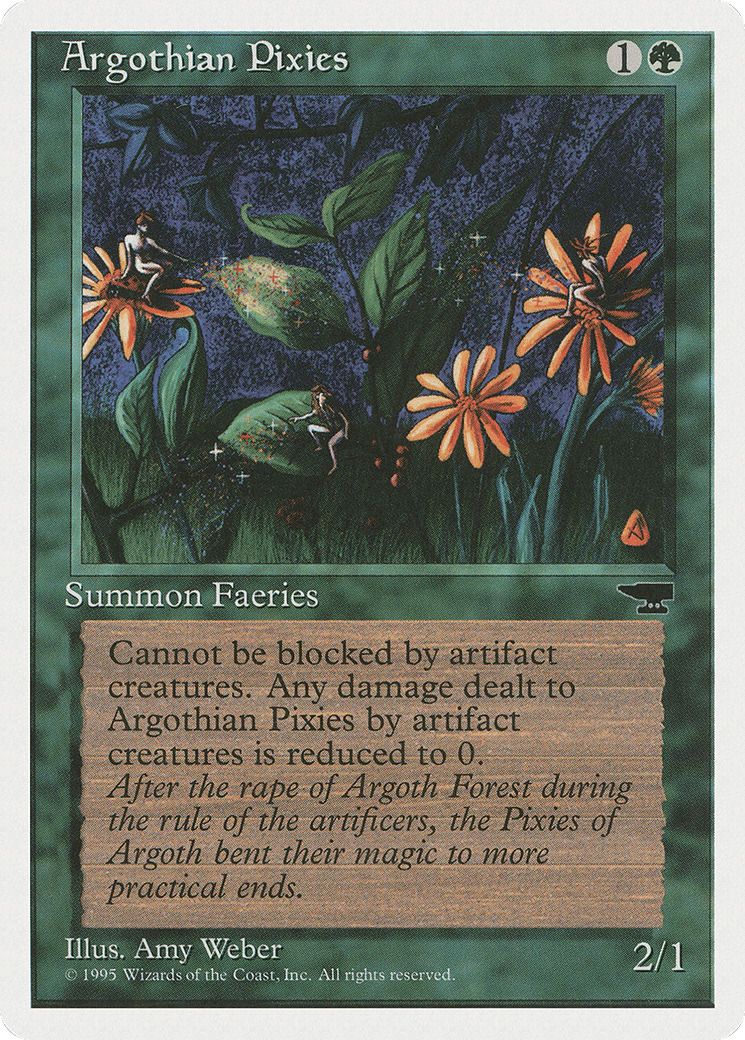

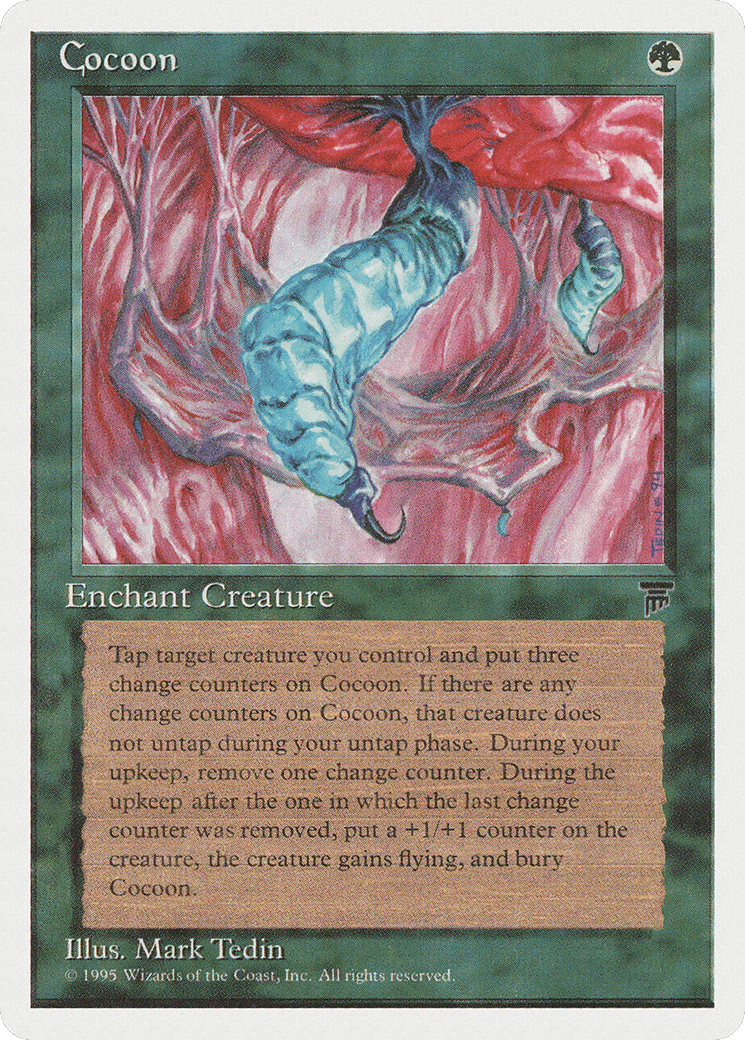
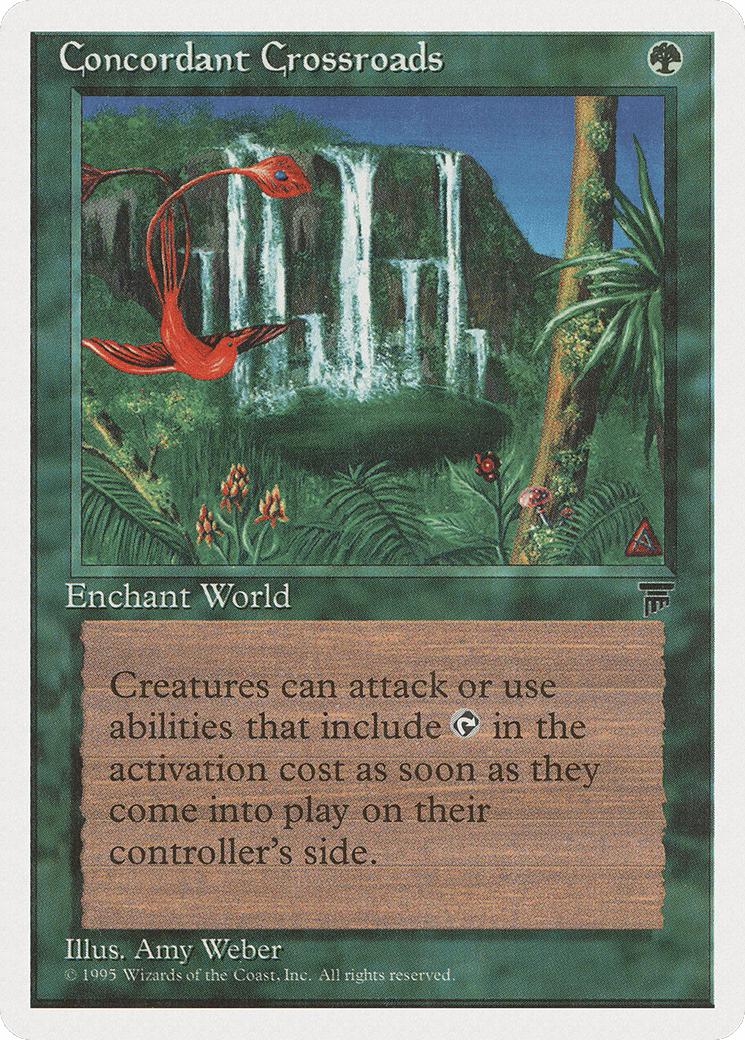
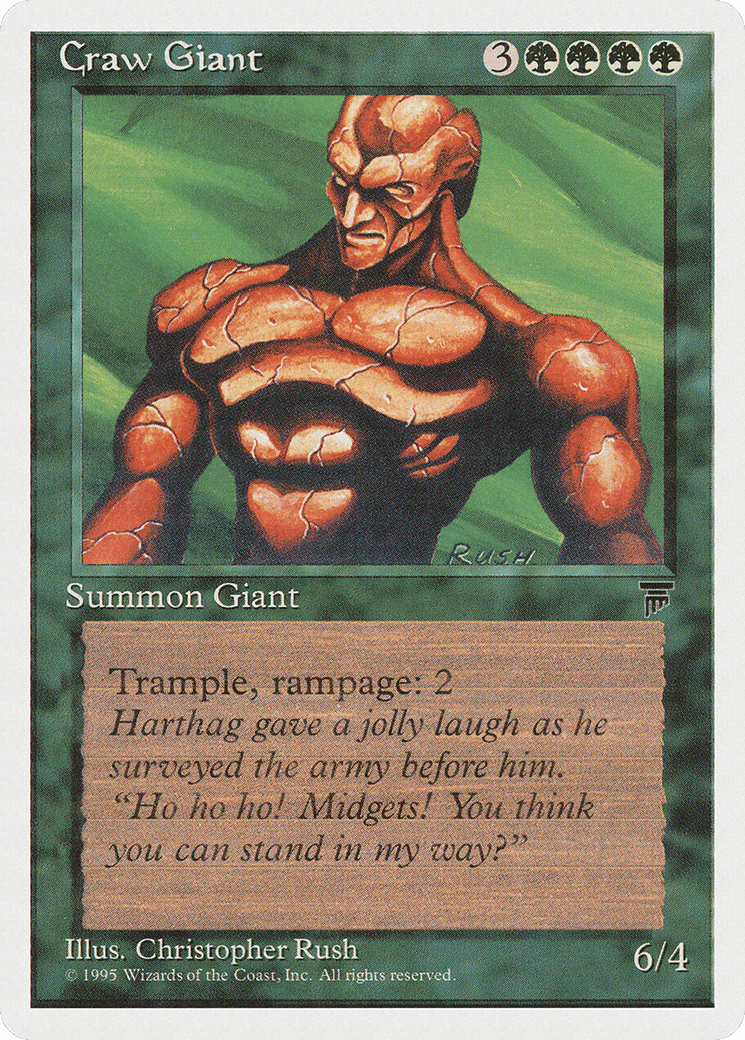

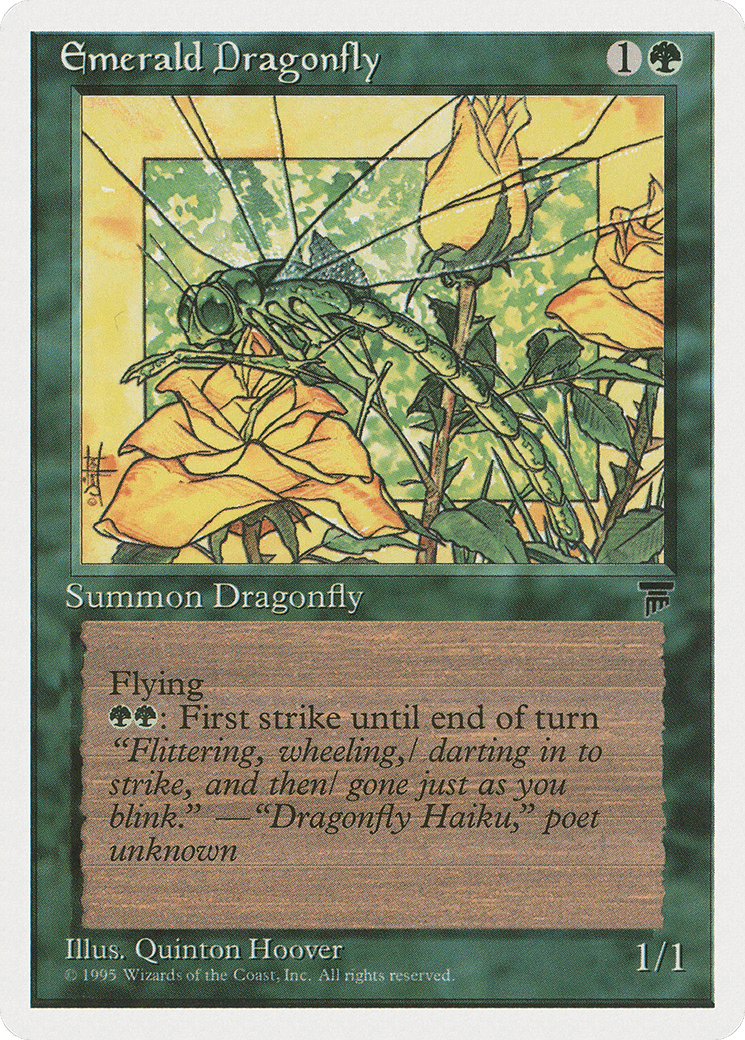
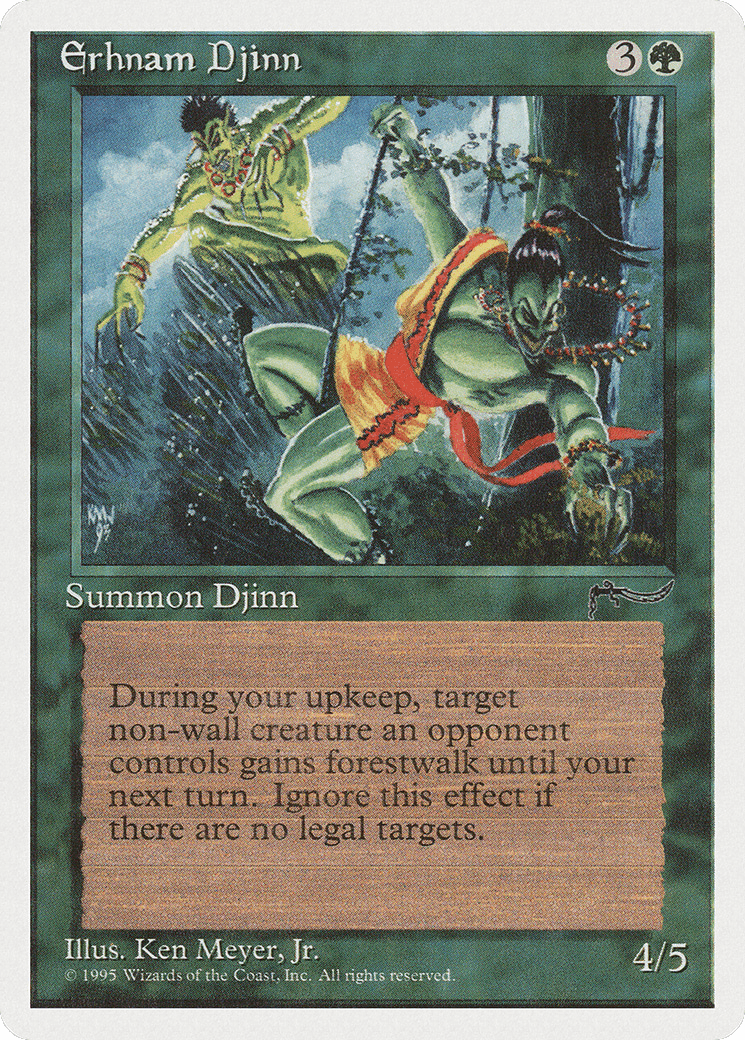
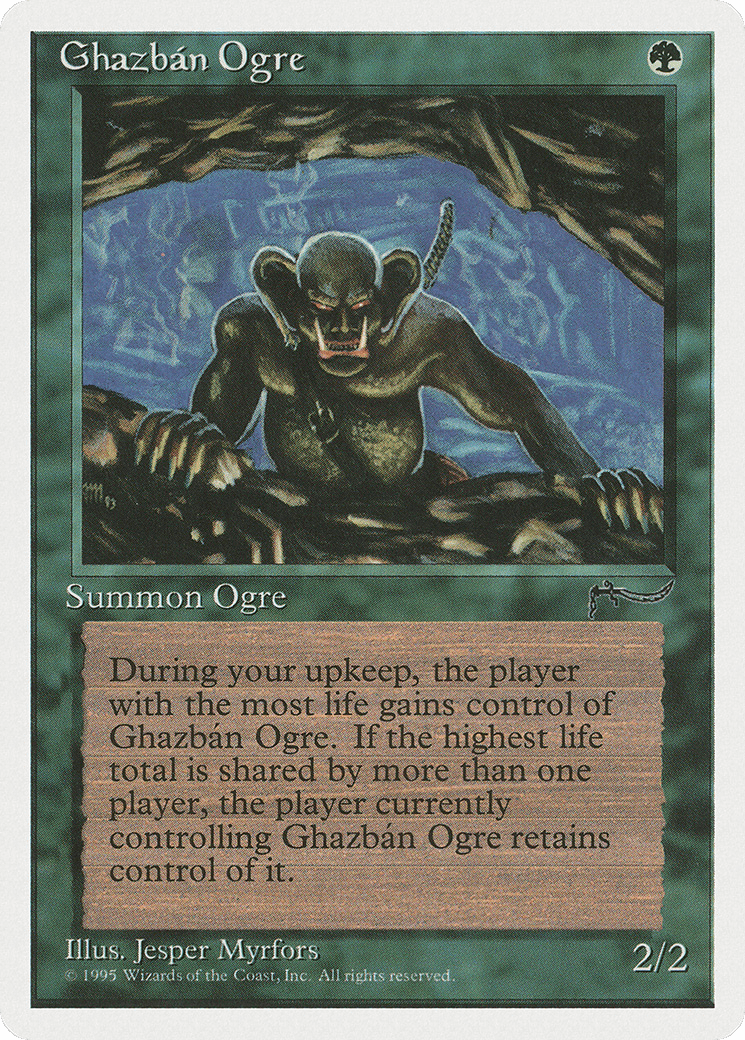
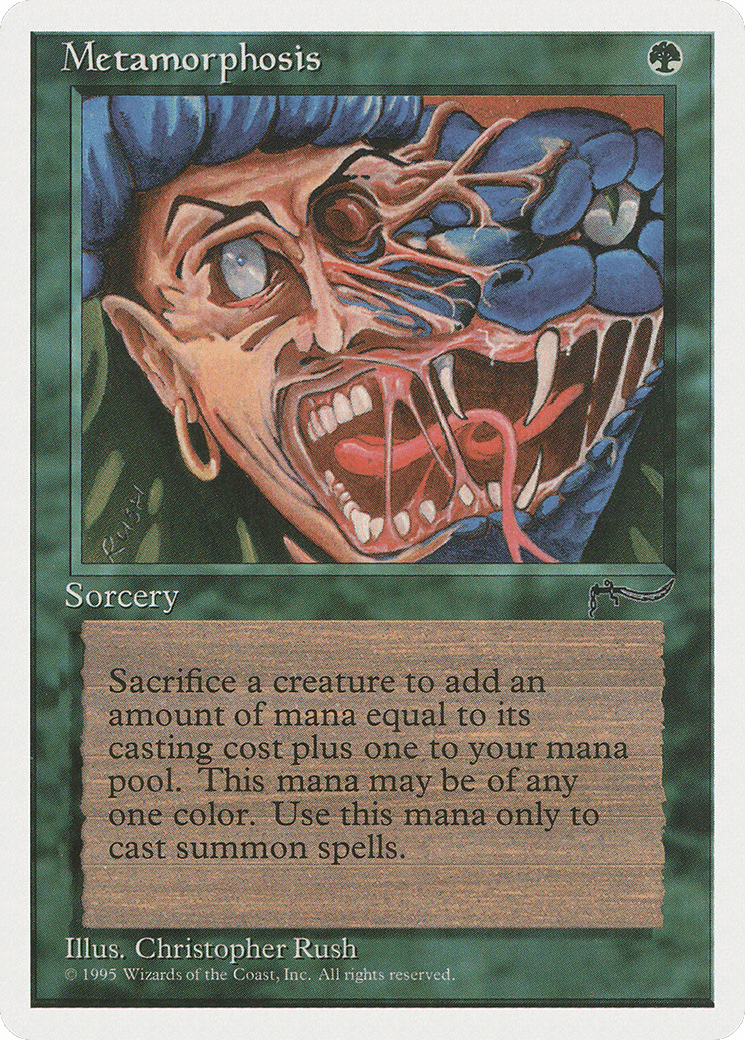

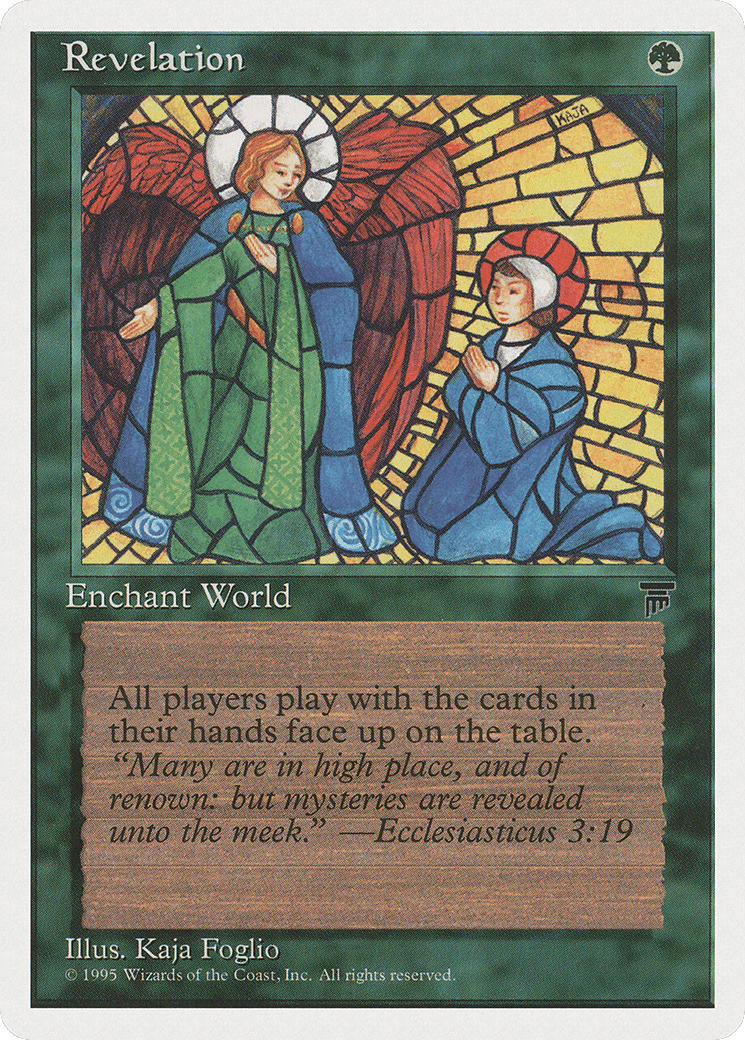
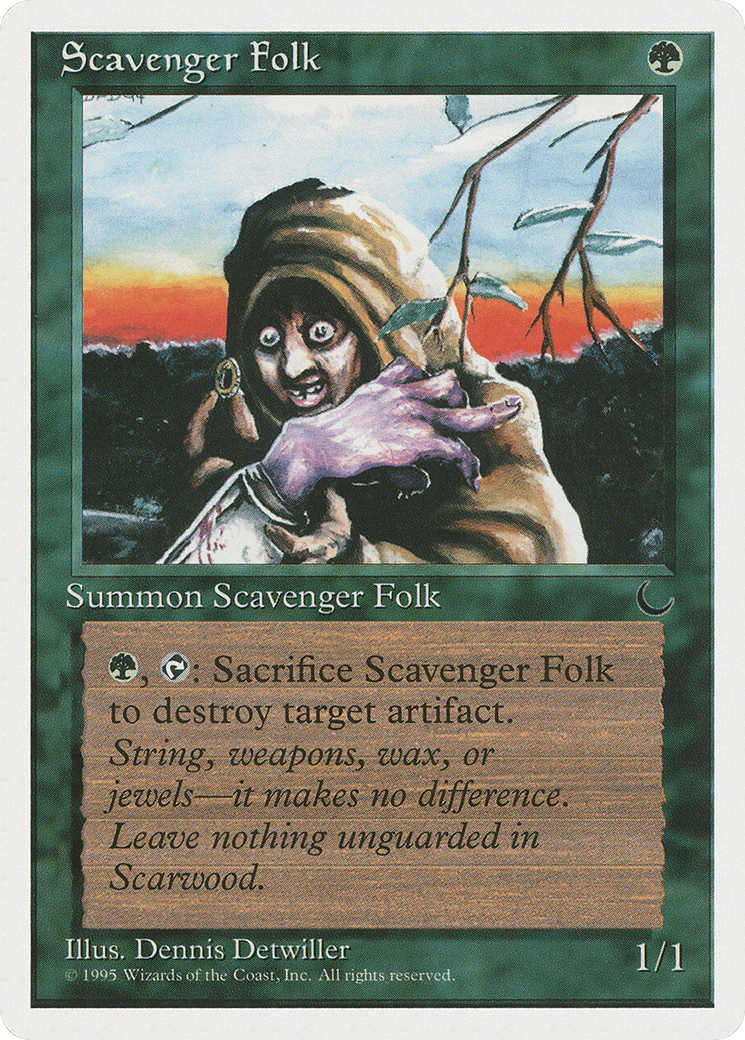
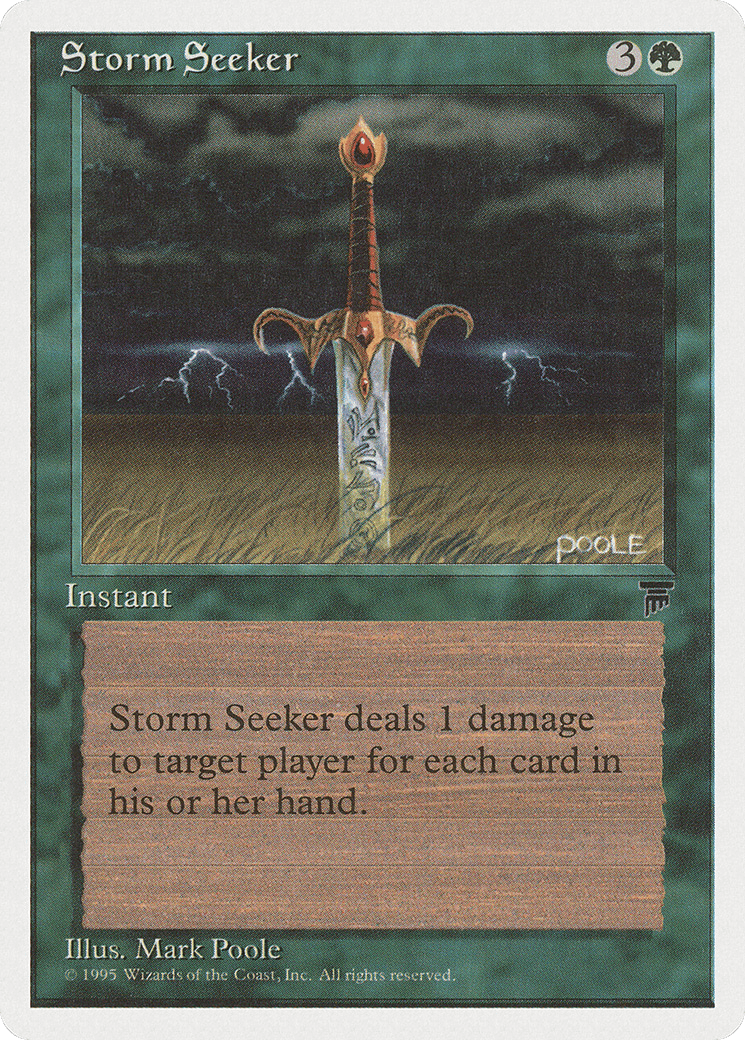
Multicolored
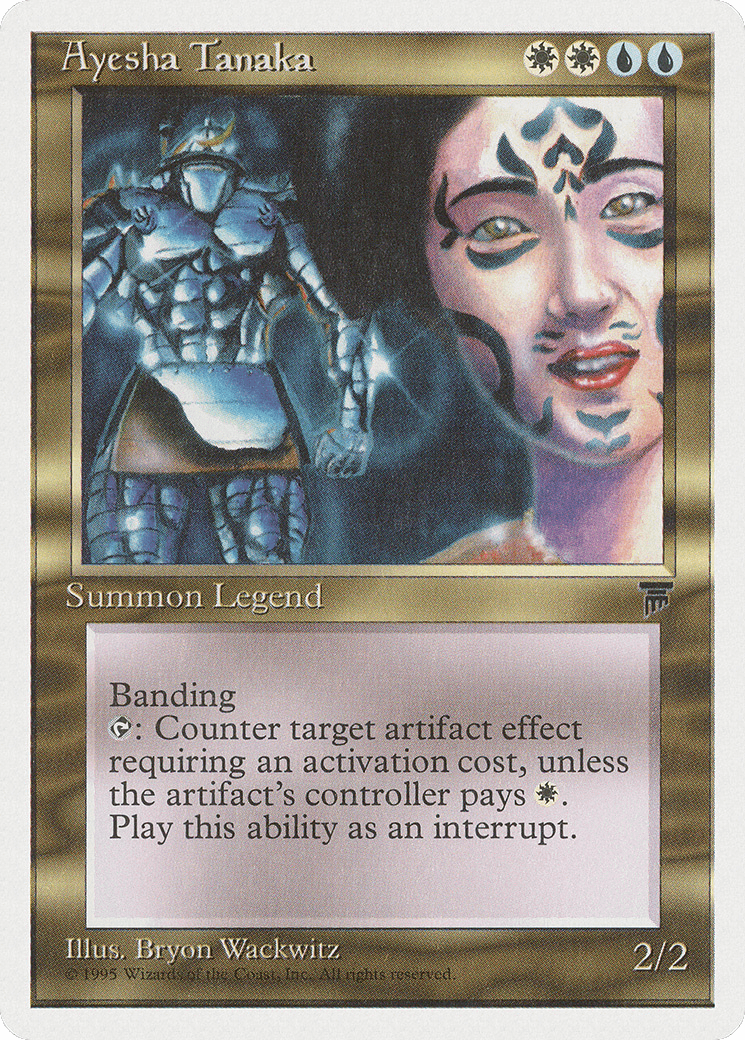
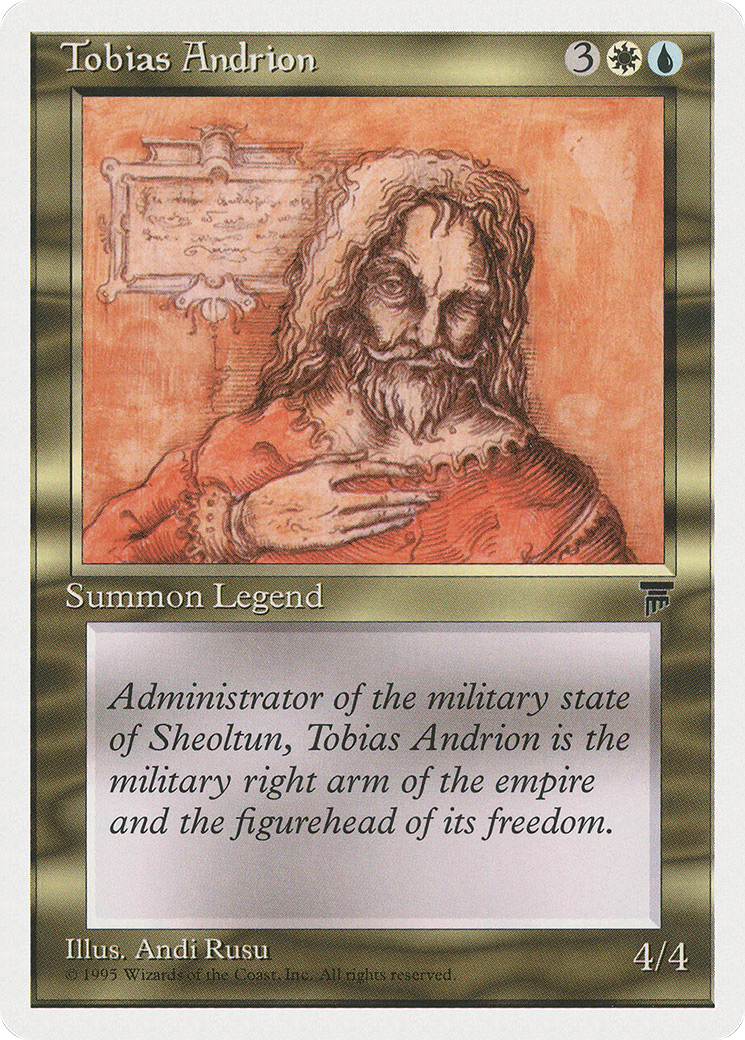
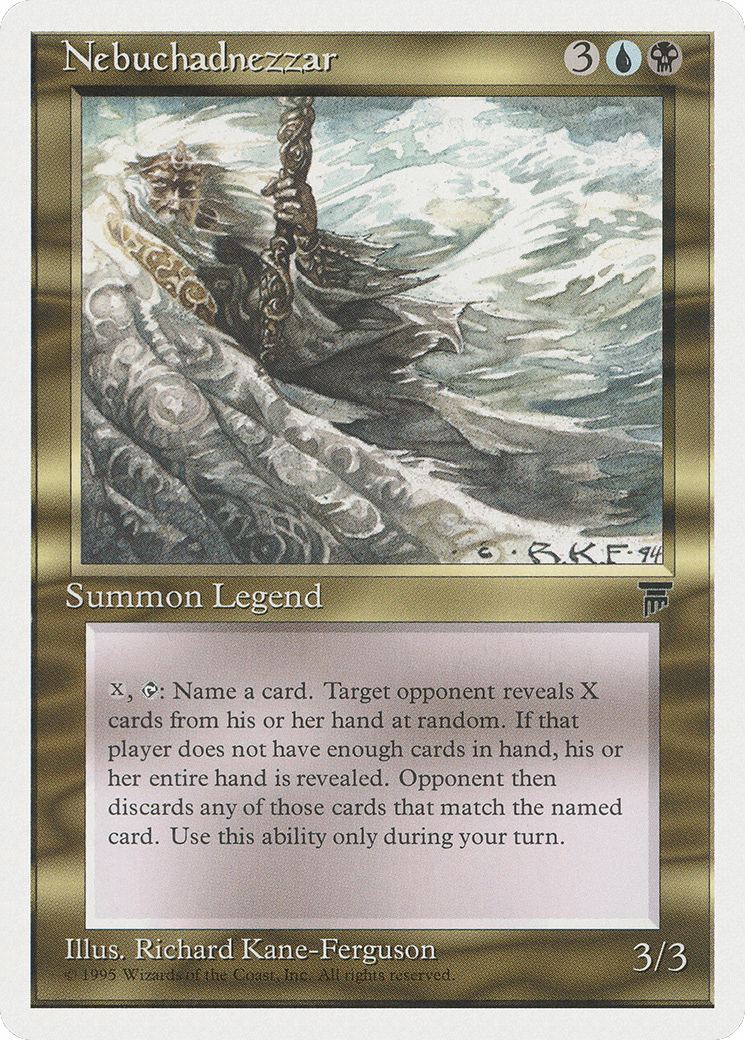
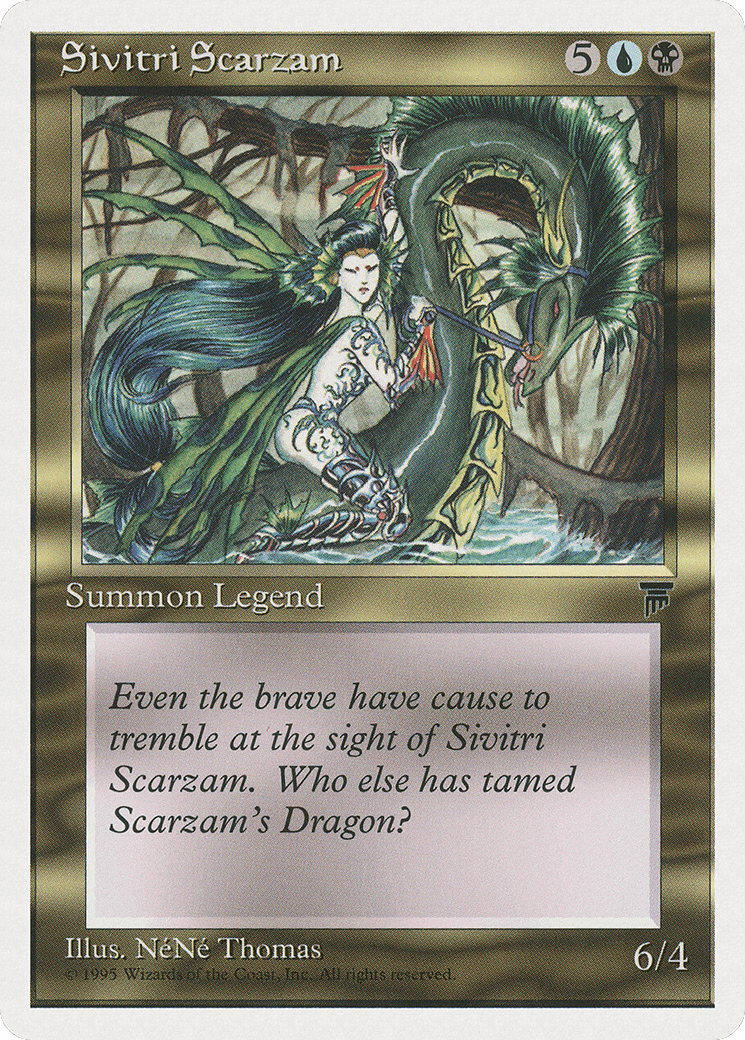


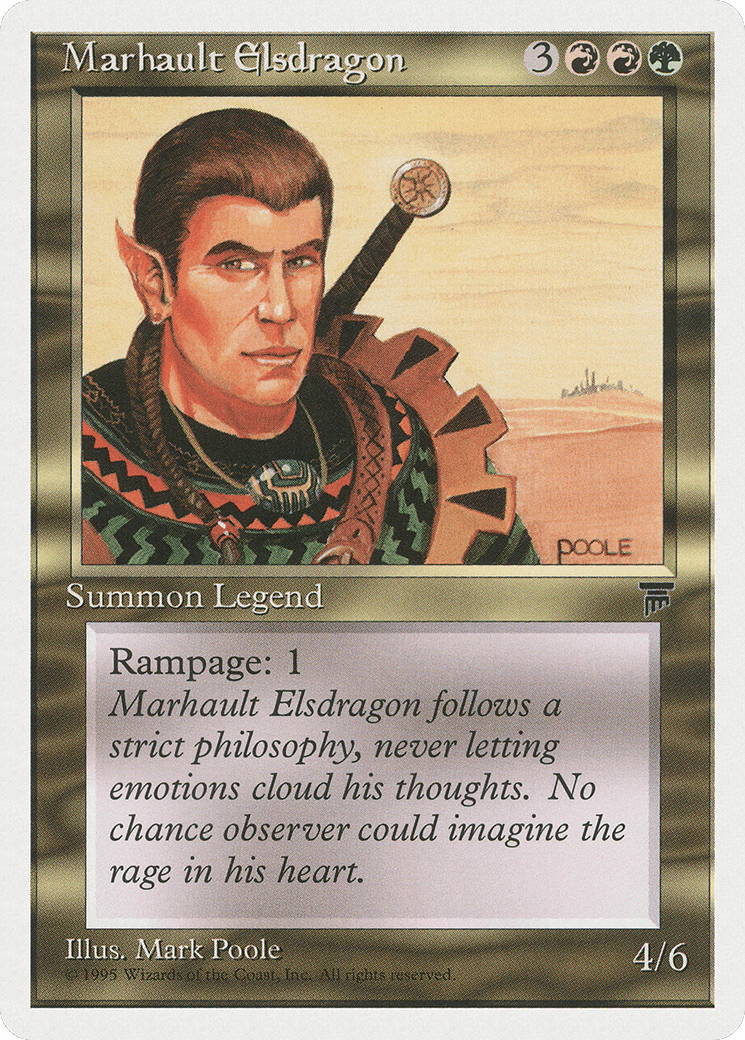
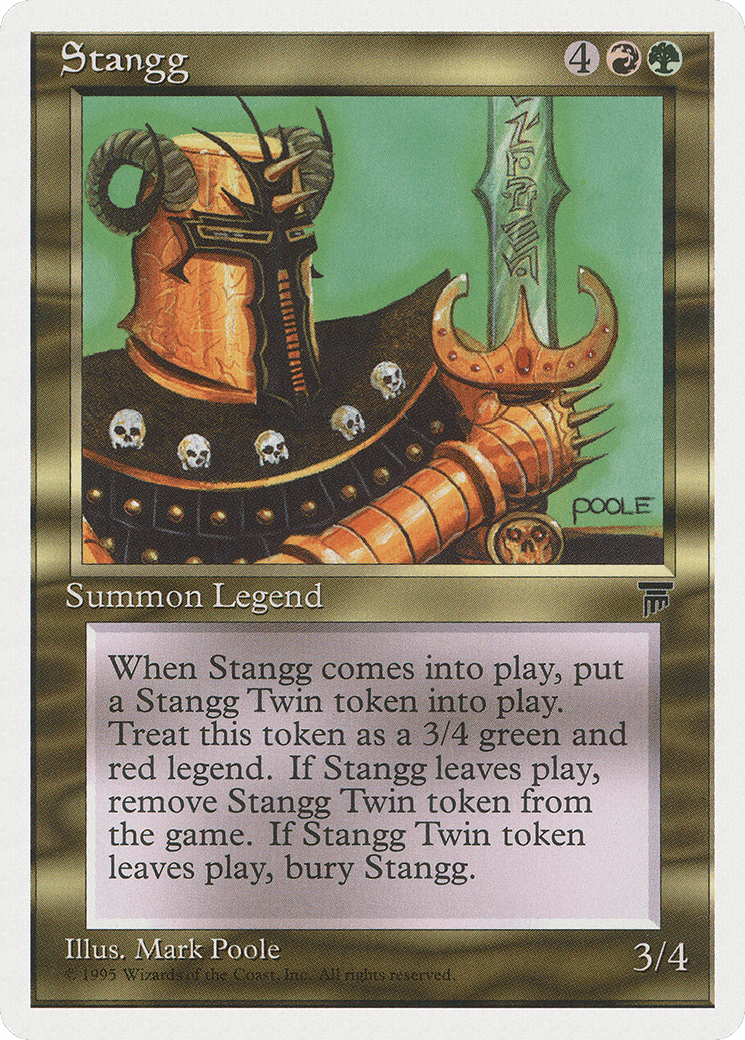
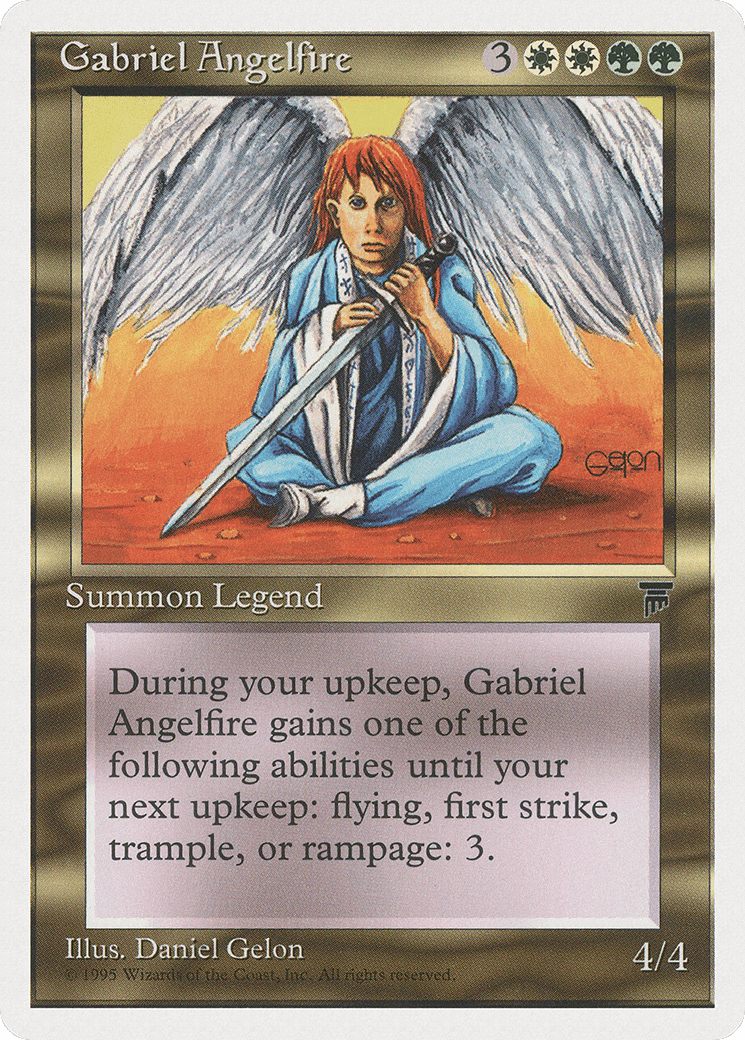

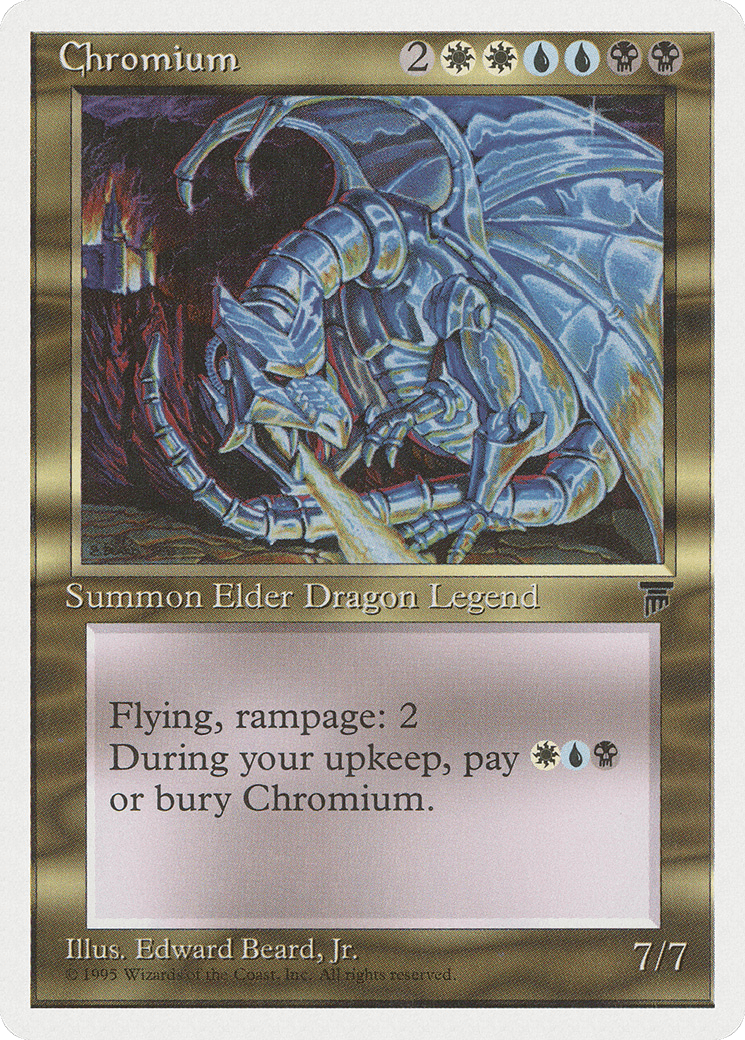

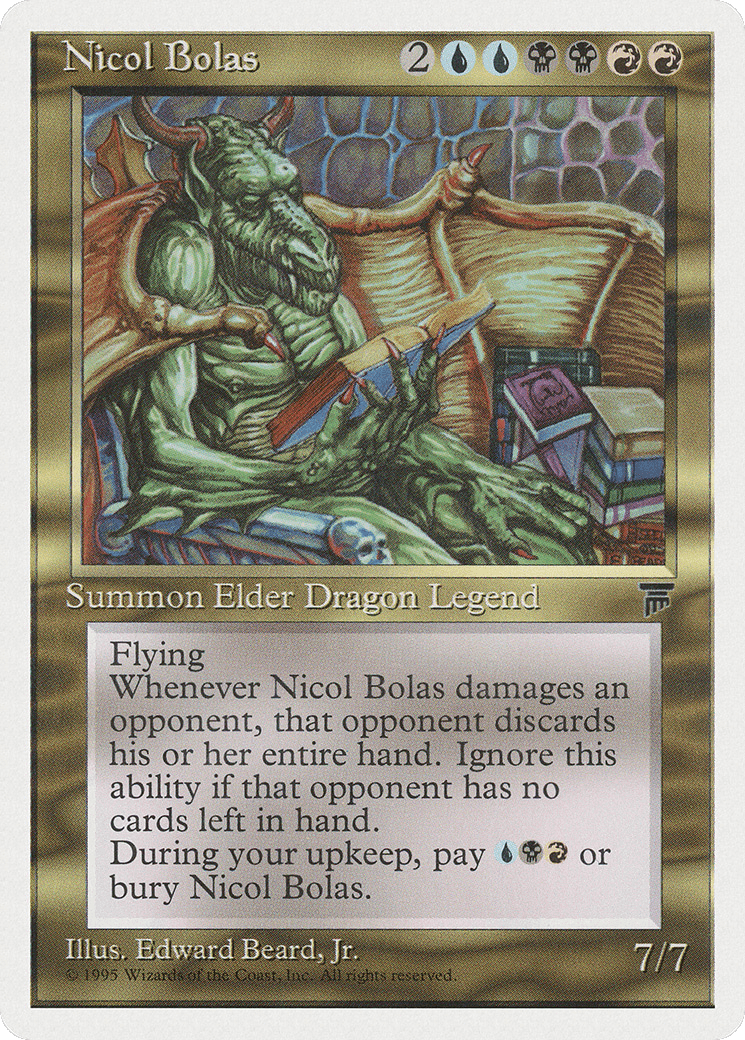

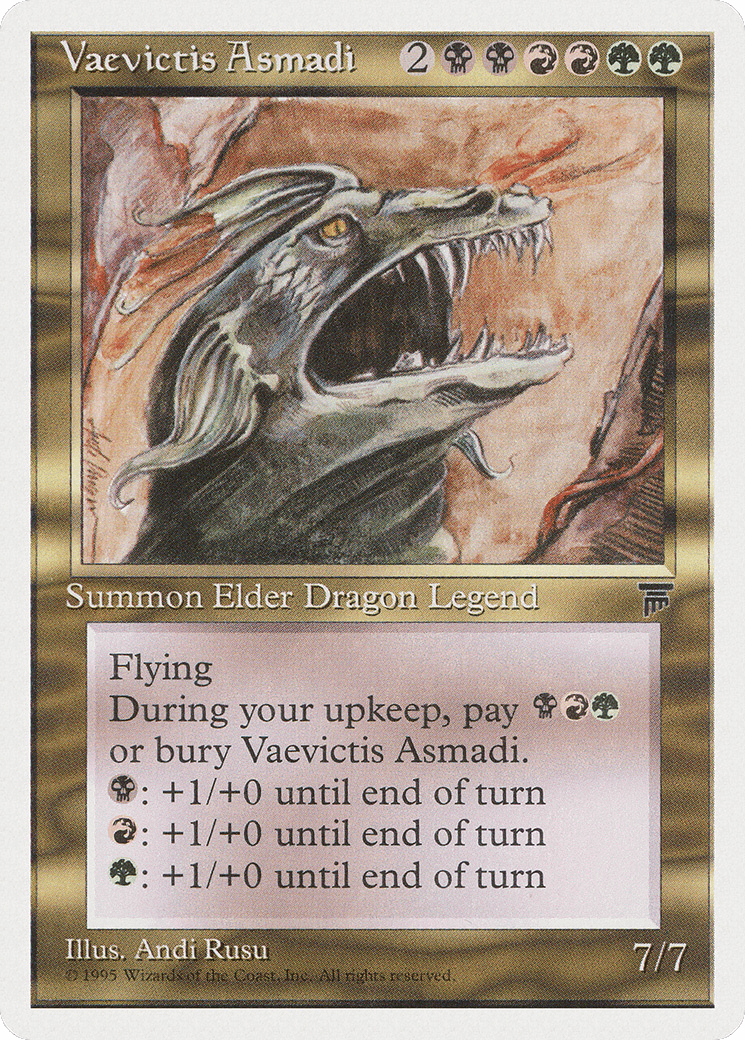
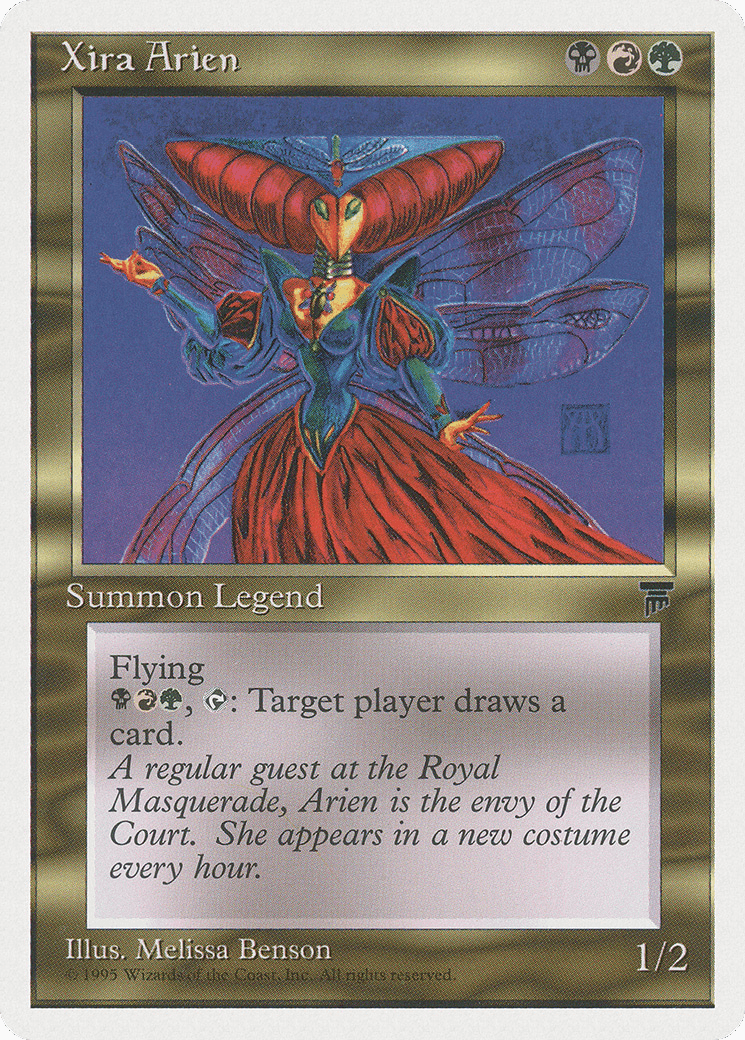
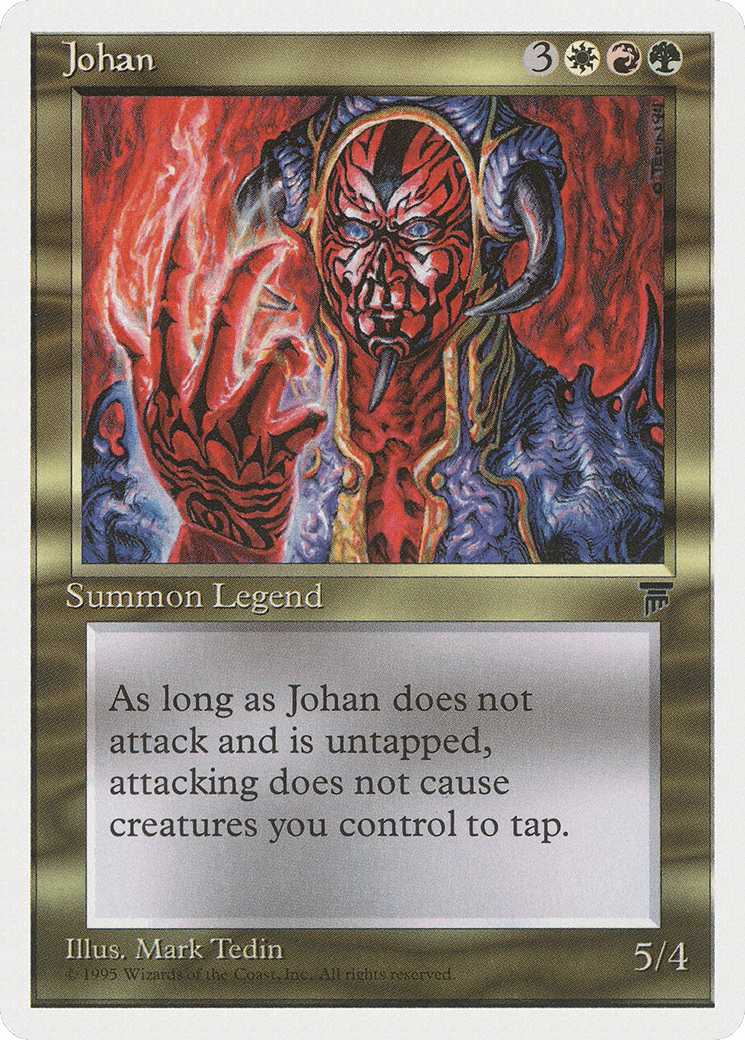
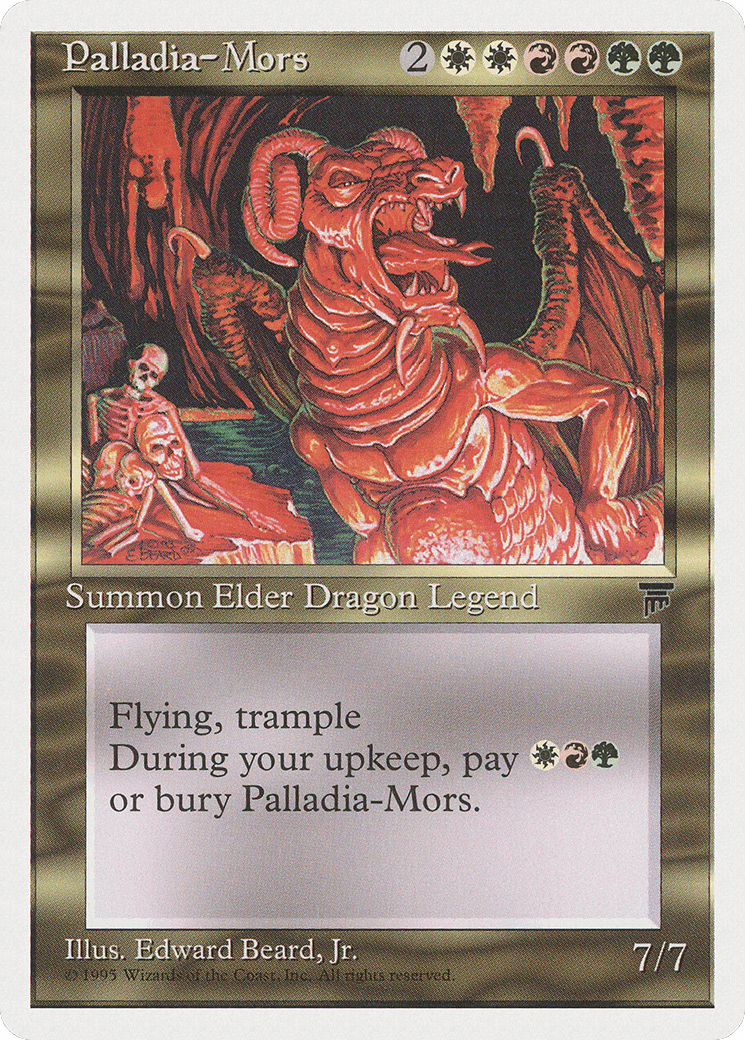
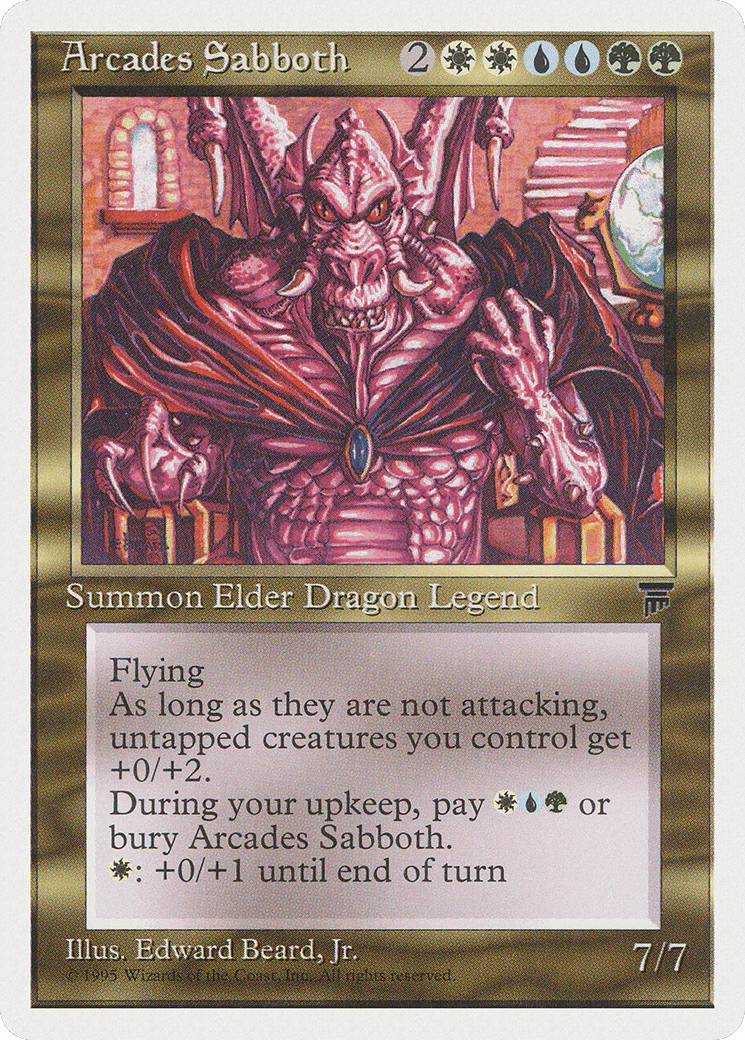
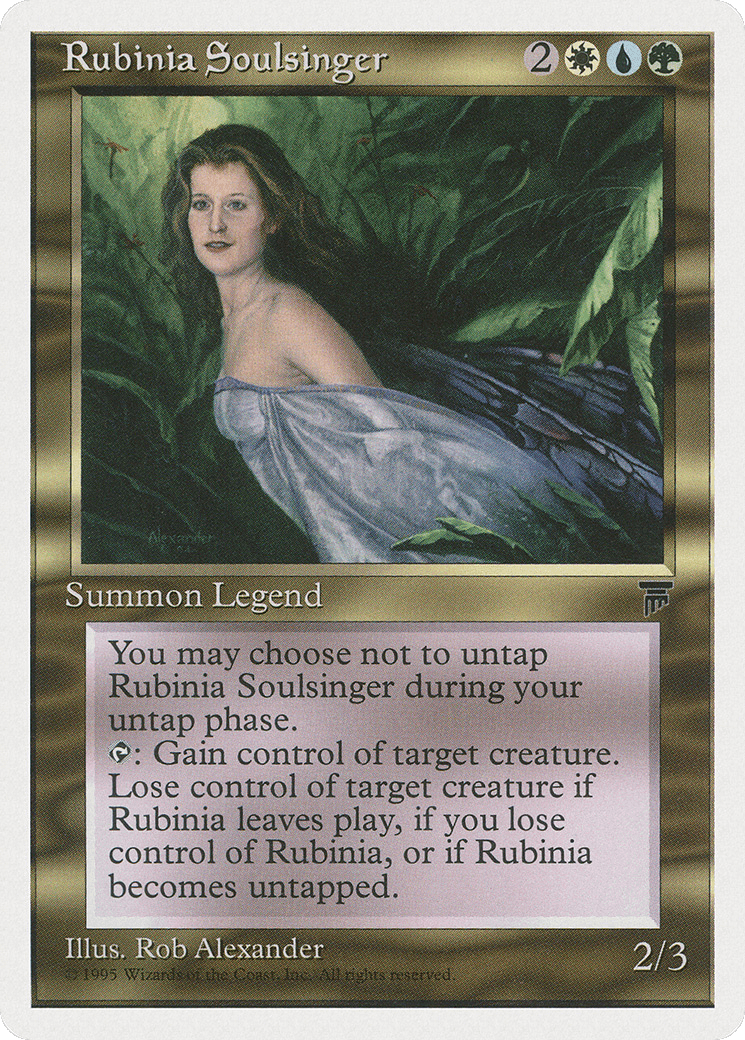
Colorless

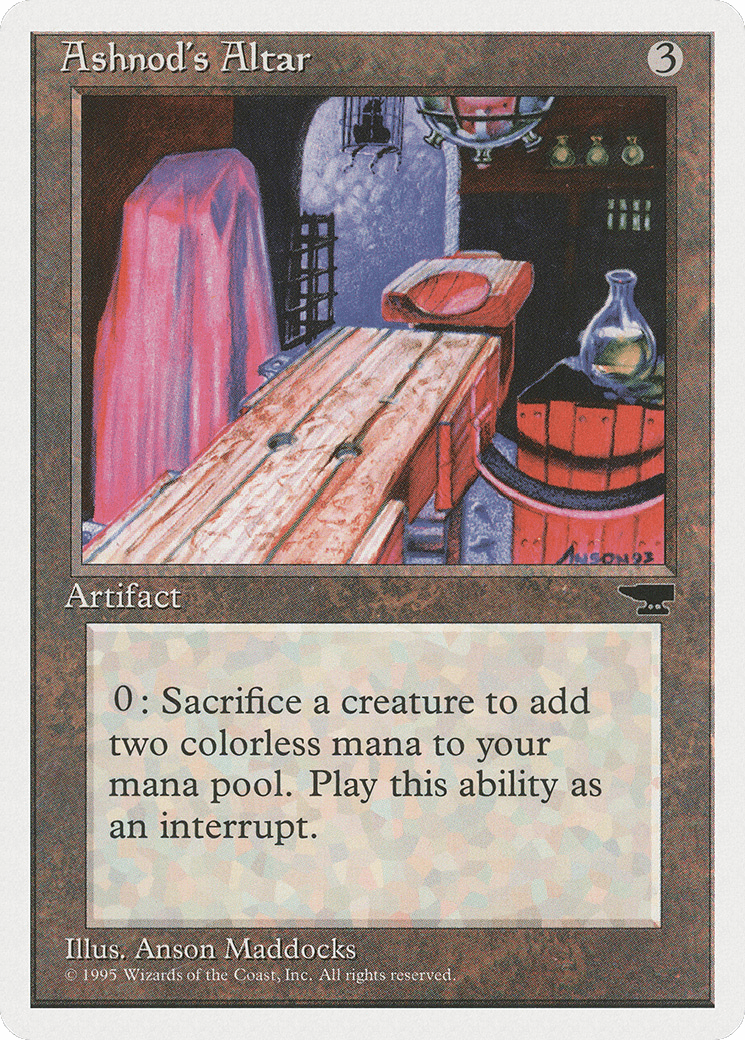
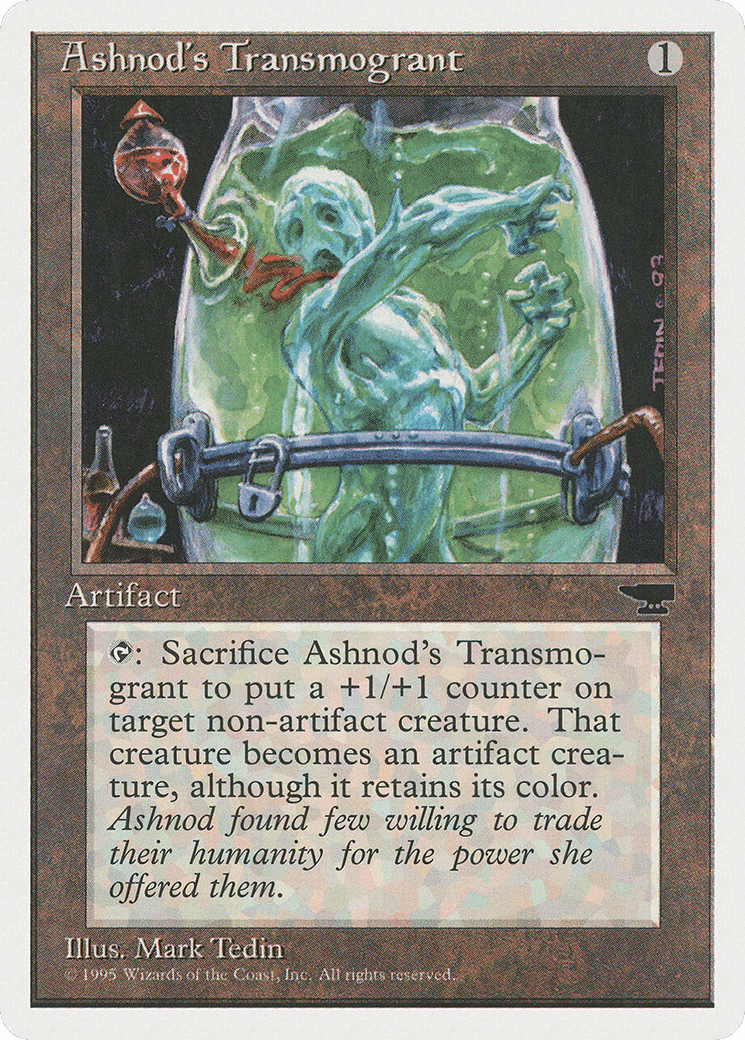
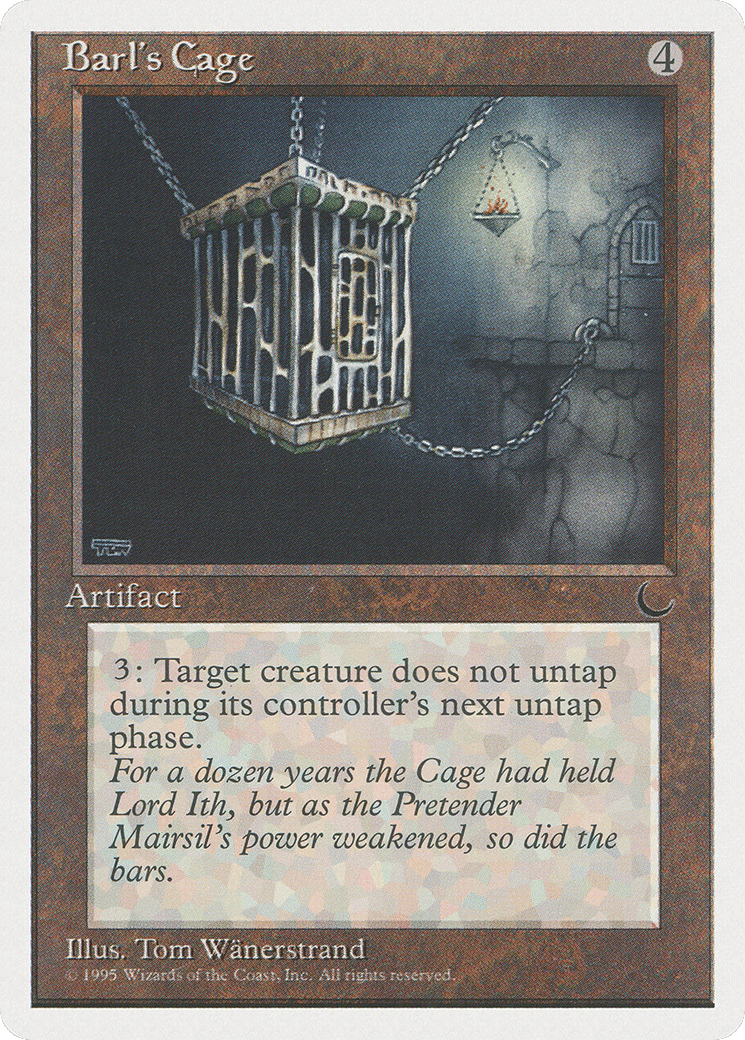

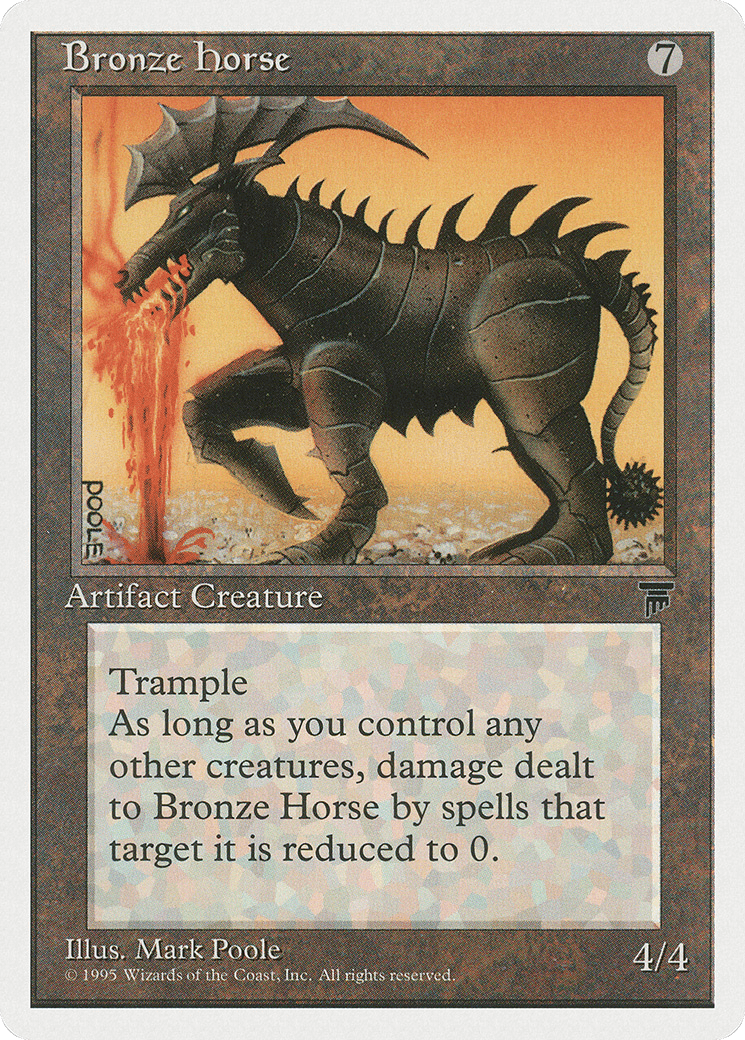
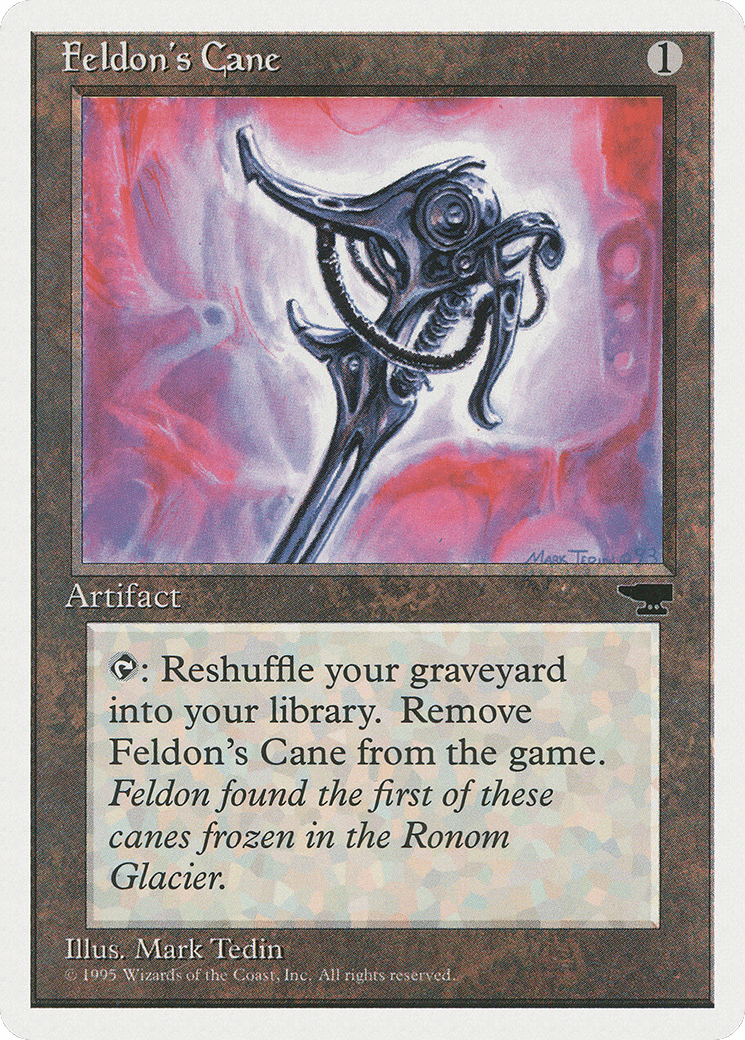

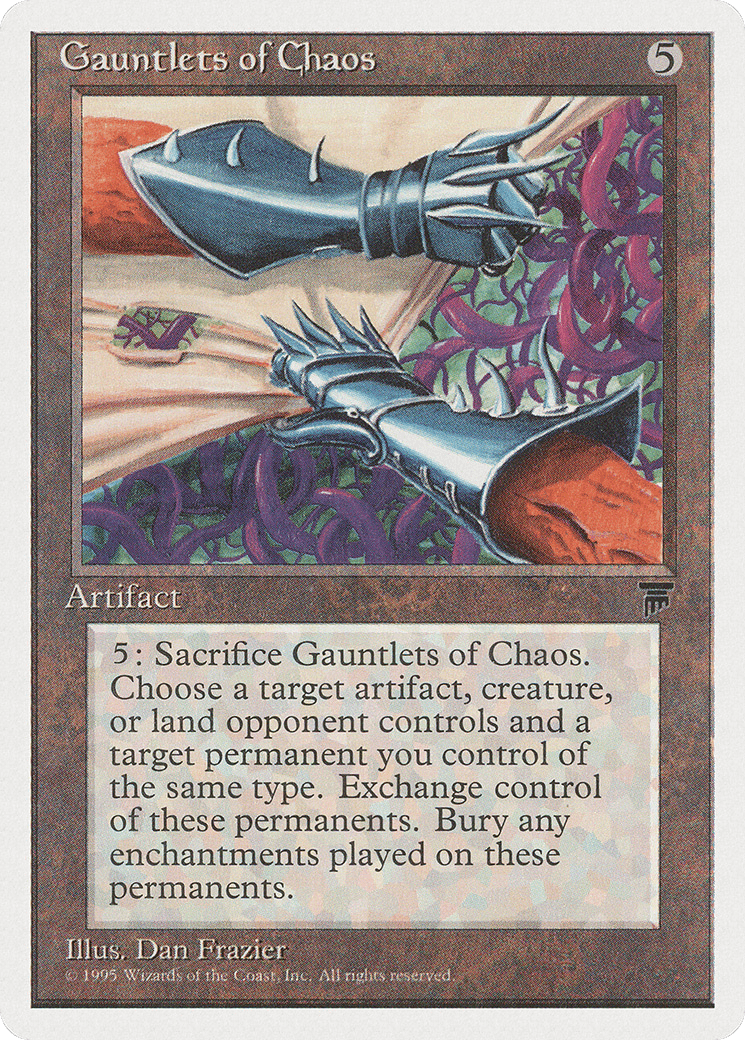
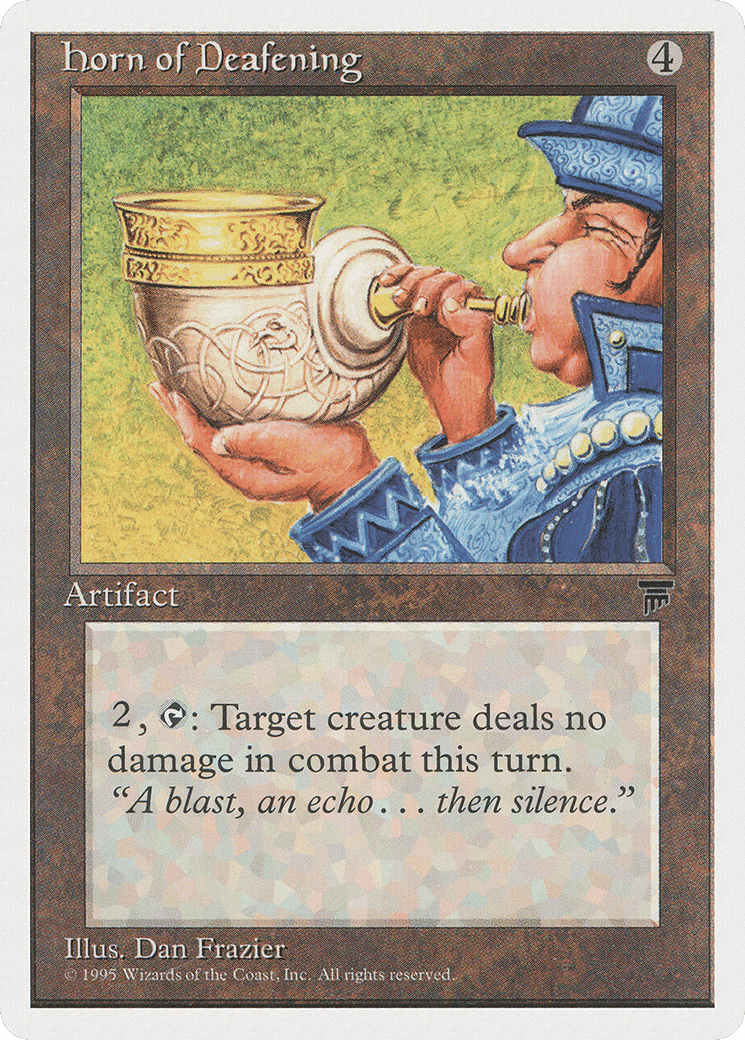
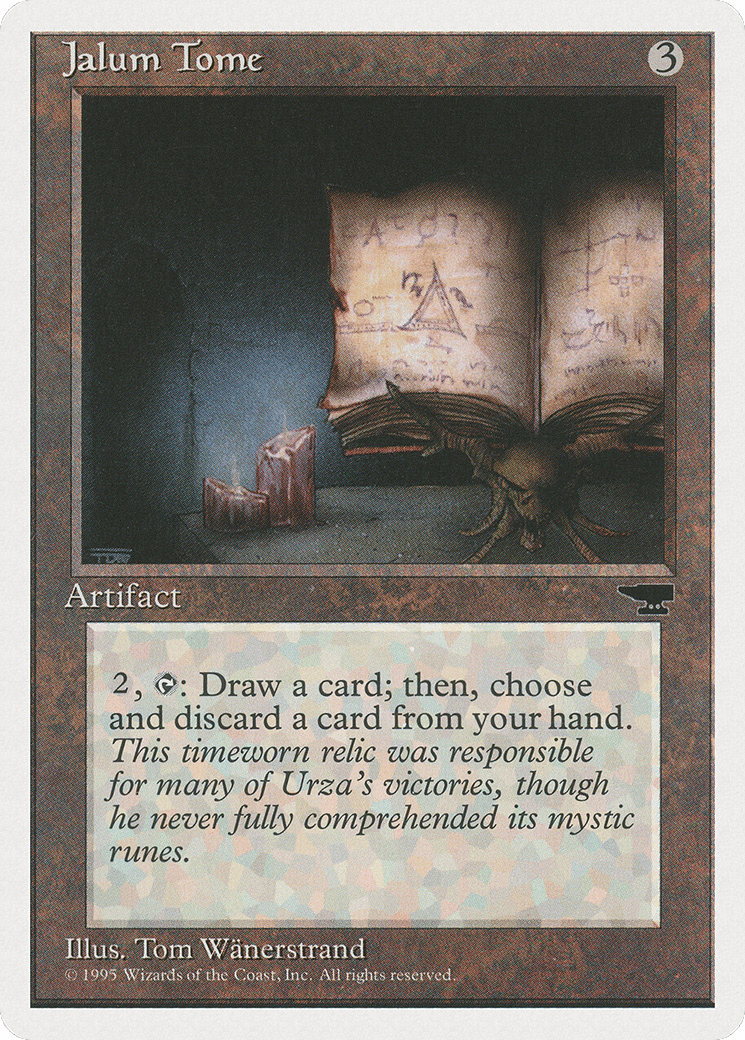
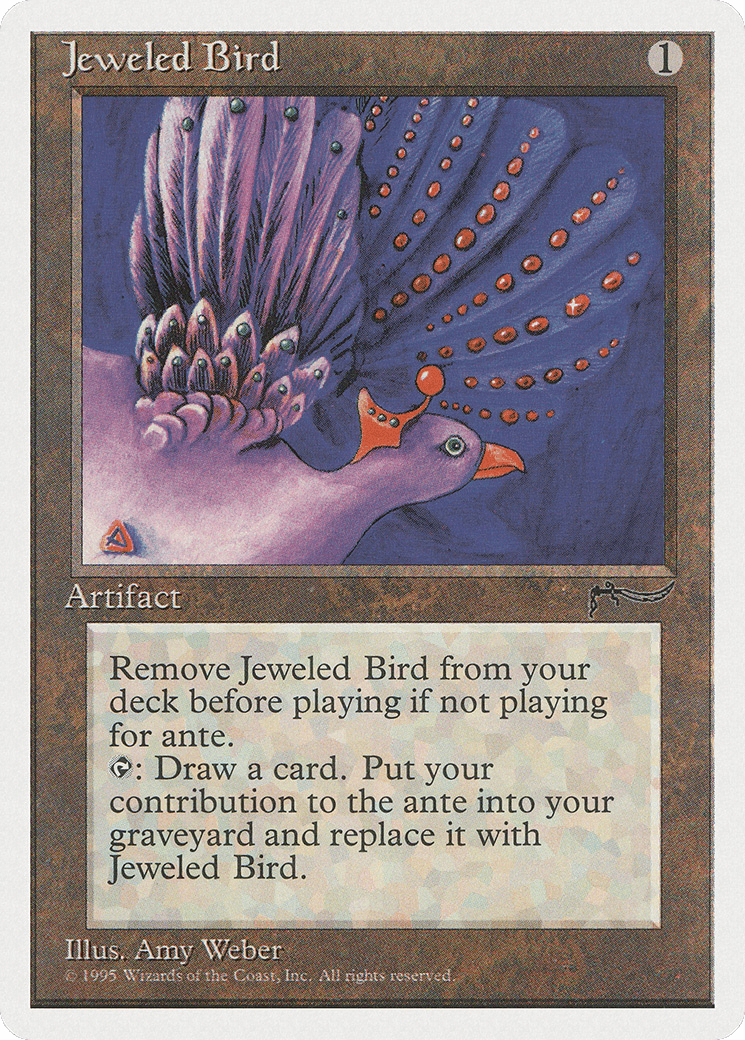

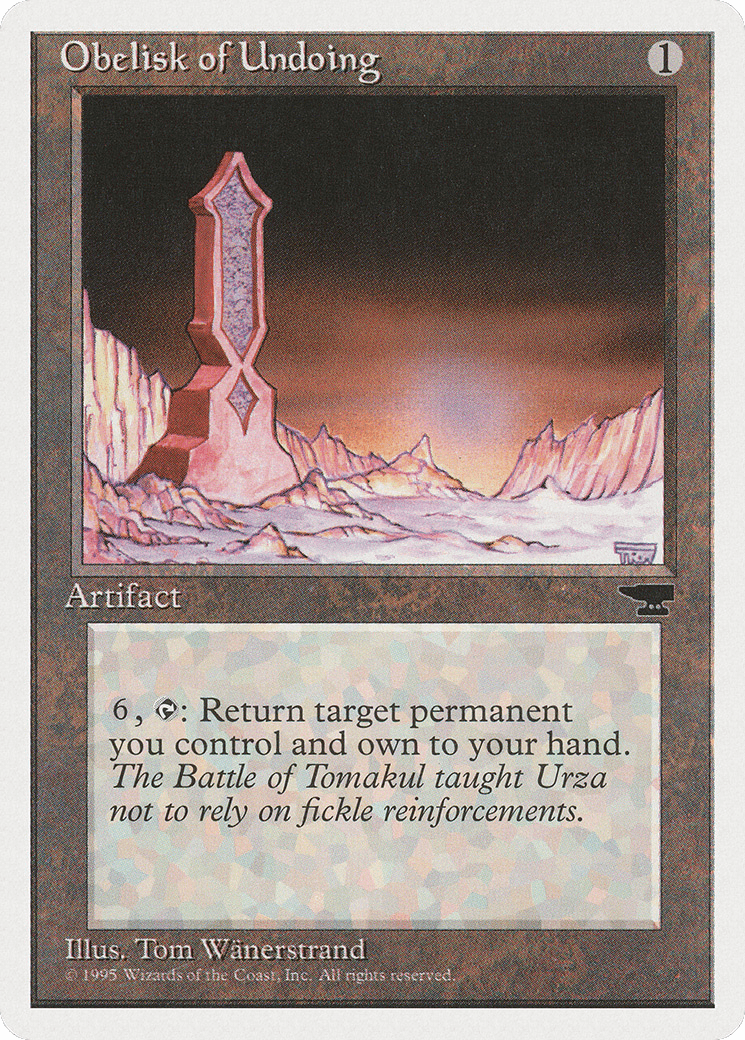
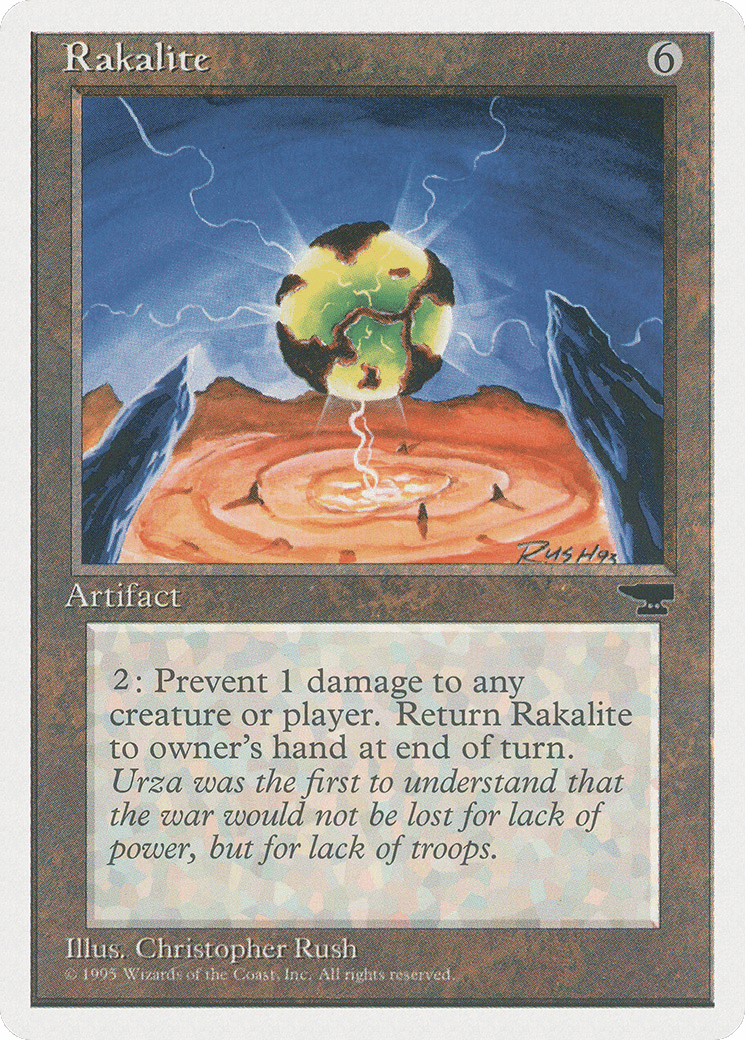

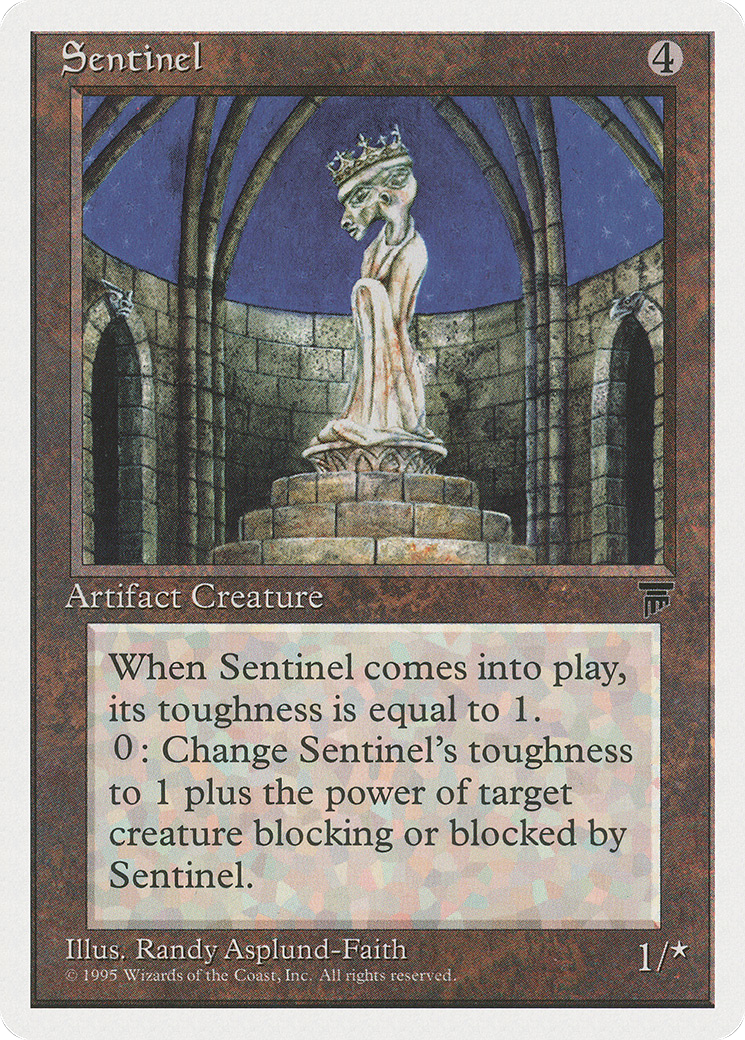

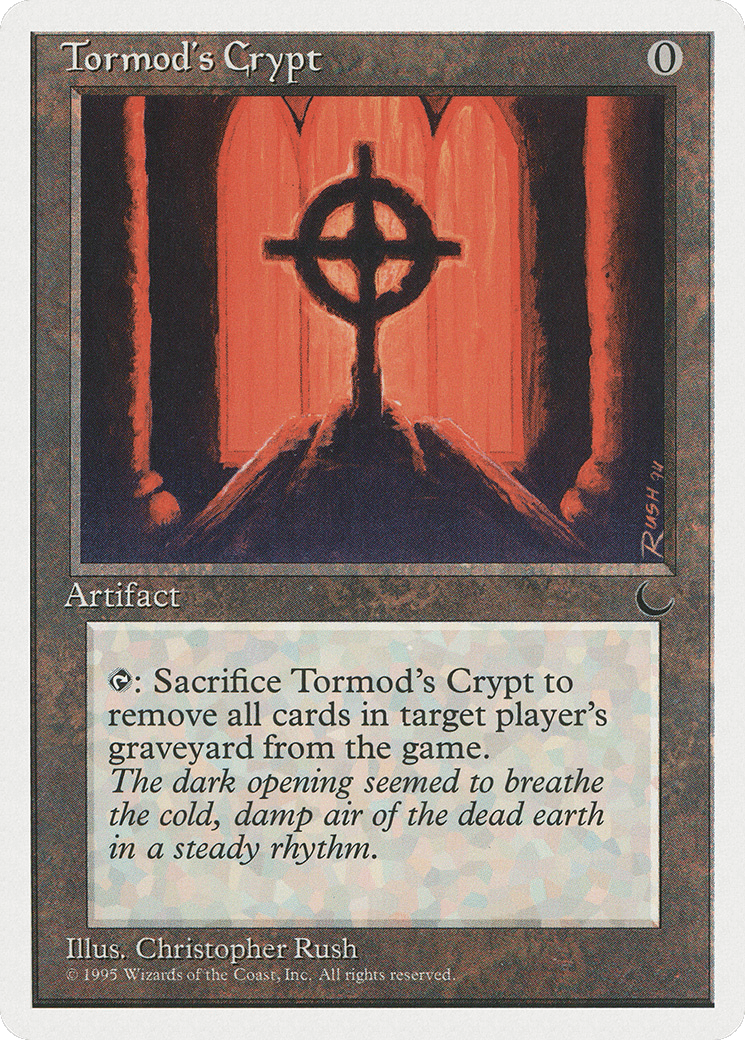
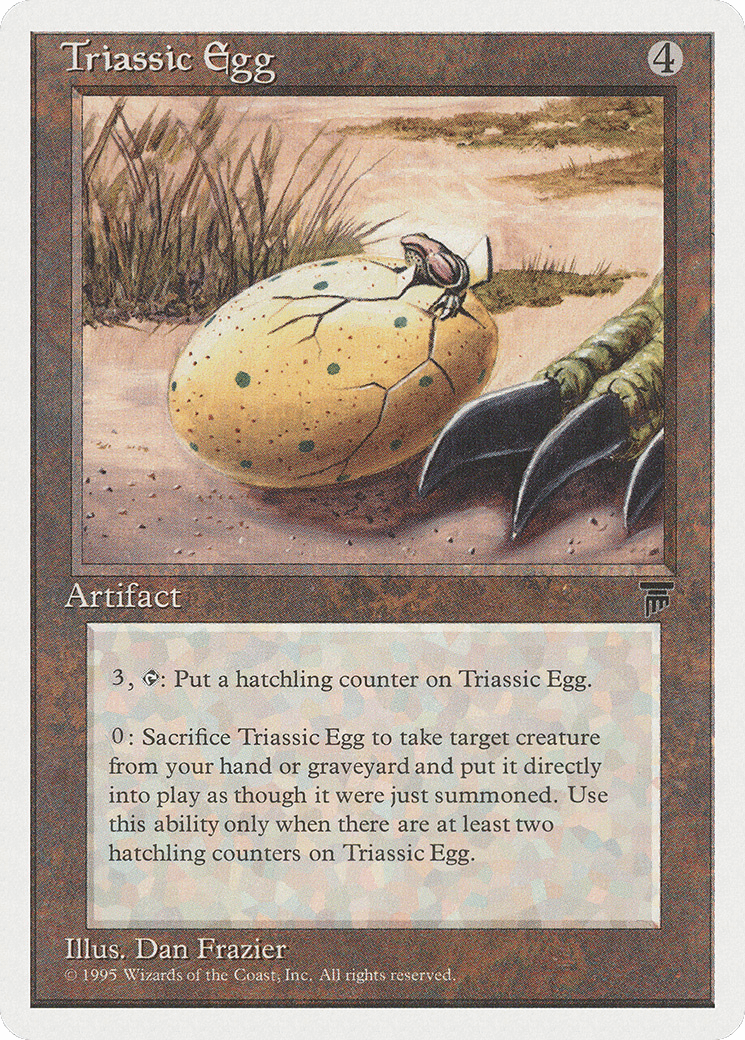
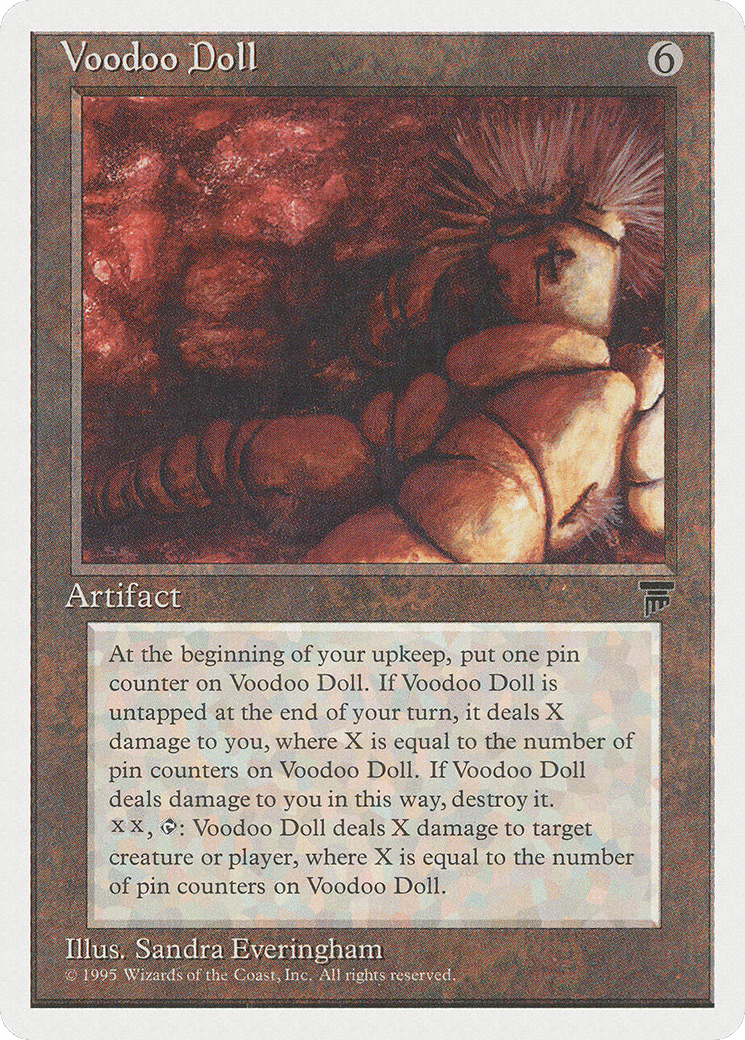
Lands

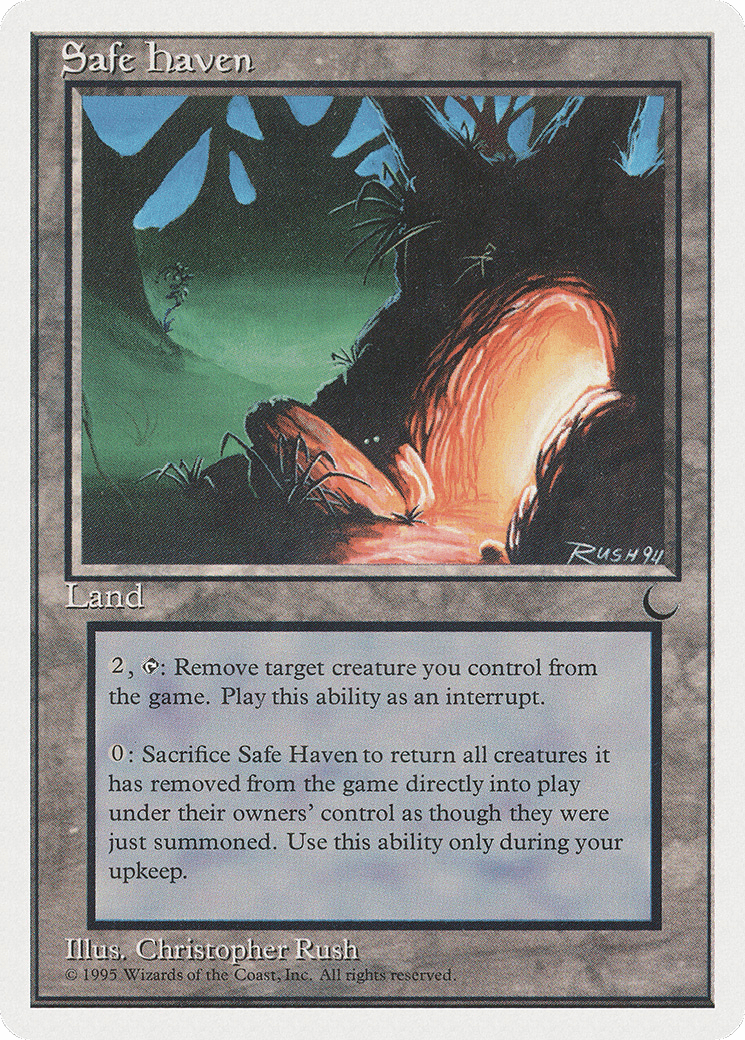
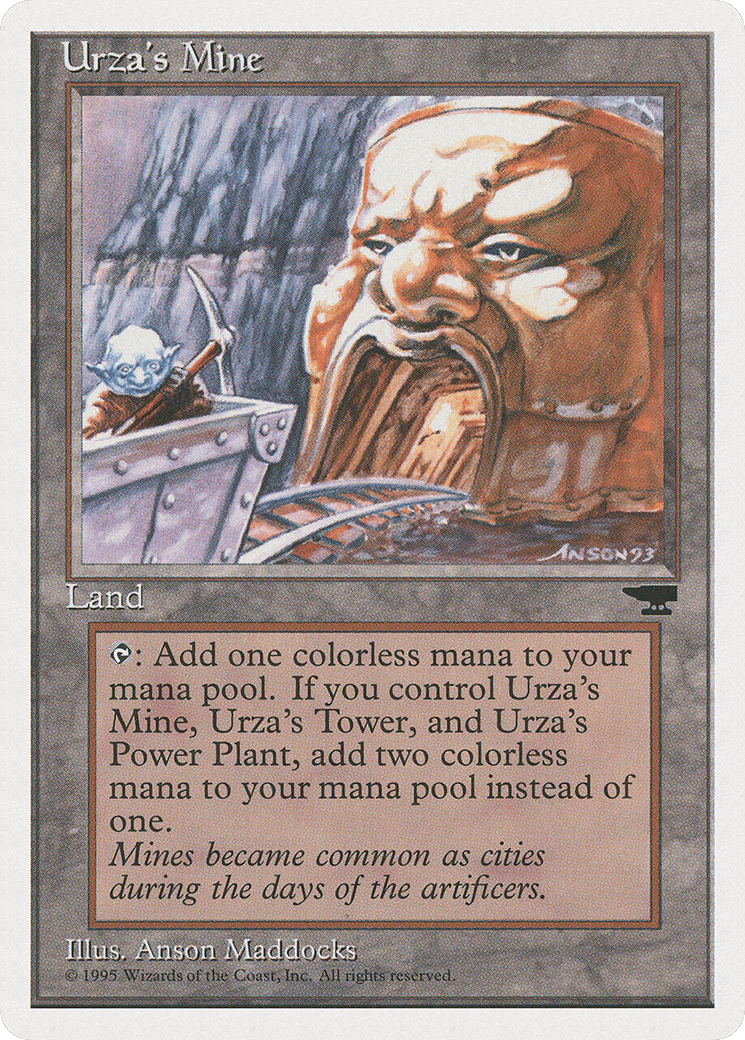
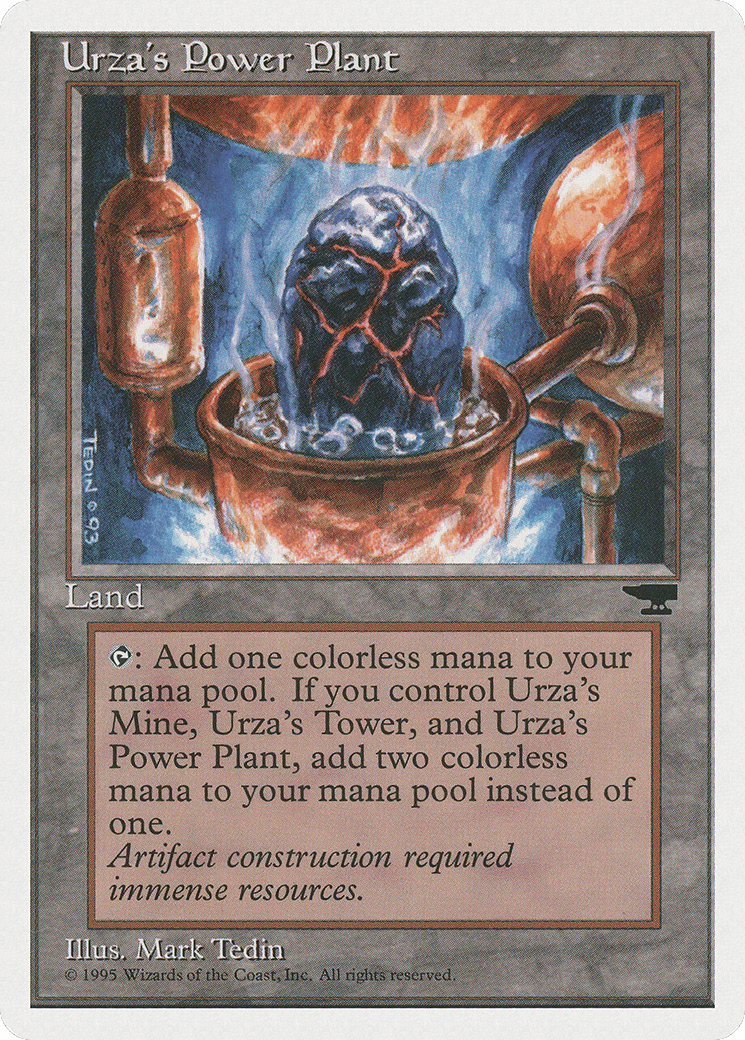

Notable Cards
Many classic Magic cards were reprinted in Chronicles. A lot more were interesting or exciting spells of their time that aged poorly as time went on.
Dakkon Blackblade

I couldn’t make this list without mentioning my personal favorite legendary creature, the one, the only, Dakkon Blackblade. Dakkon’s off-color ability and villainous appearance have captivated me since I first laid eyes on it, and the Chronicles printing was just the right price when I started building my Commander deck.
City of Brass
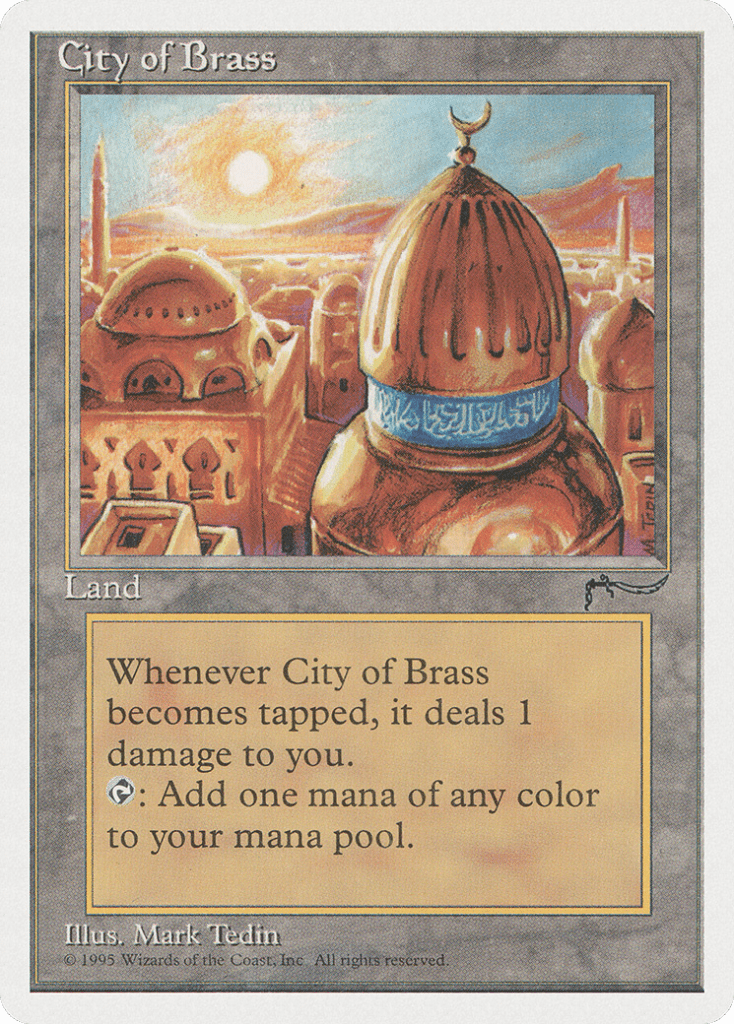
City of Brass was the ultimate 5-color land back in the day, and it still sees a significant amount of play across all formats it’s legal in.
Elder Dragons





The cycle of elder dragons from Legends were powerful 3-color creatures with very low pull rates. They were horribly devalued with the release of Chronicles and were the main reason collectors were furious about the set. Their reprintings are a direct cause for the creation of the Reserved List.
Cuombajj Witches
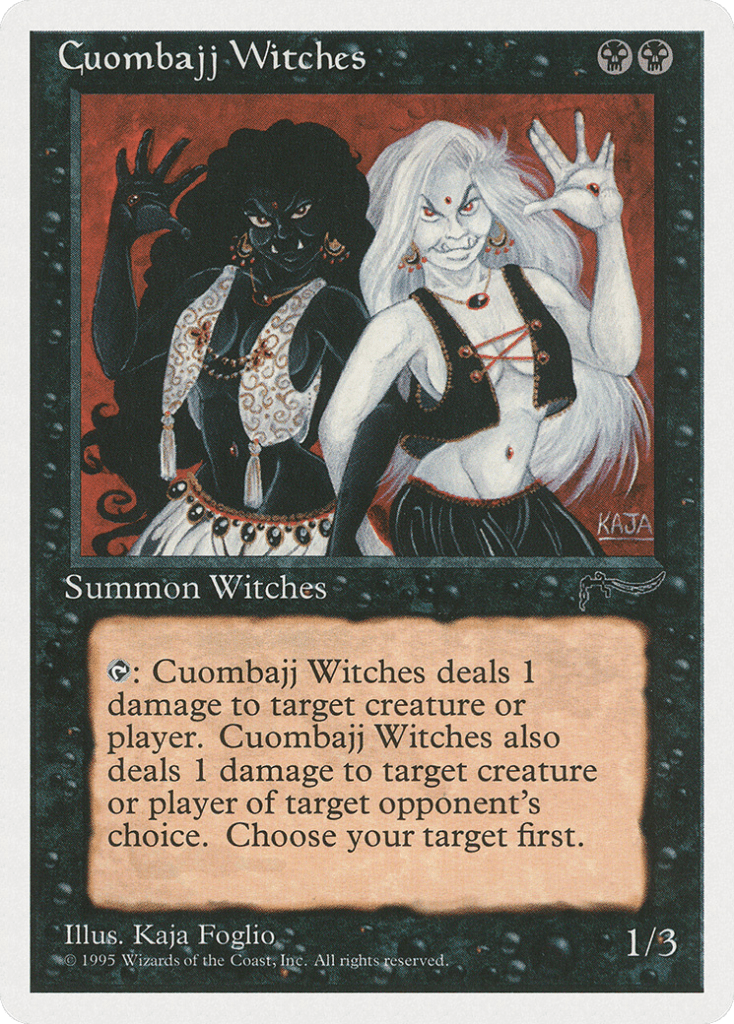
The Pauper staple Cuombajj Witches was originally printed in Arabian Nights before its first reprint in Chronicles. Its unique ability in black makes it a favorite for cheap black removal, and its three toughness means it won’t die from its own ability.
Blood Moon
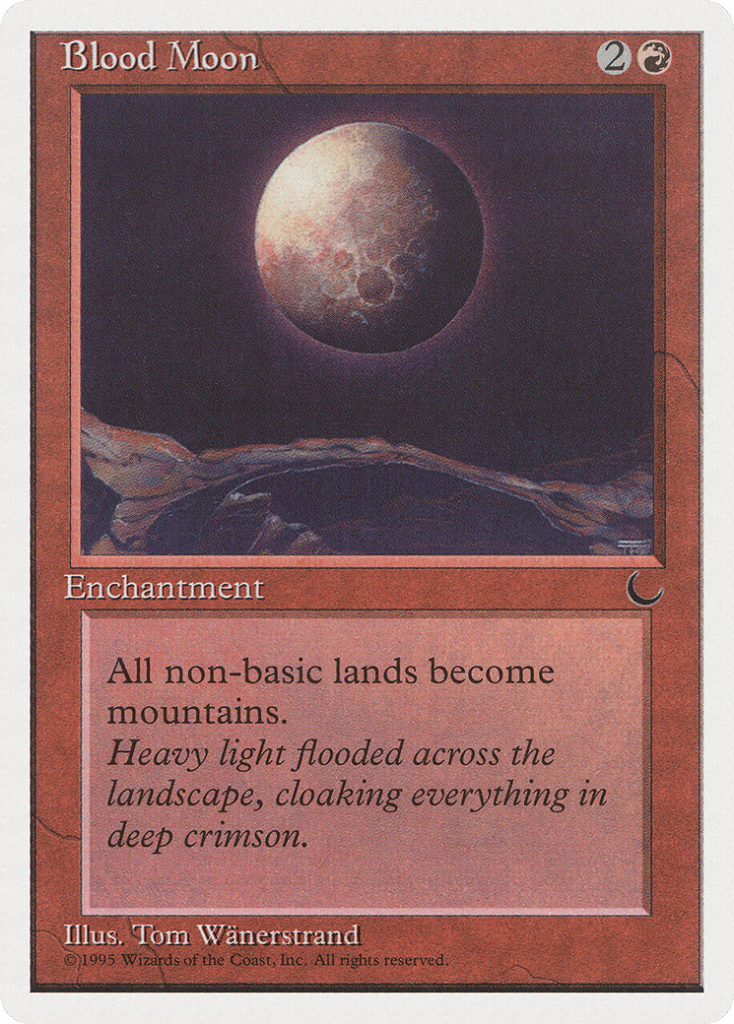
Blood Moon still sees play just about everywhere. It’s one of the most brutal stax effects in the game, shutting down multicolor decks and Field of the Deads alike.
Concordant Crossroads

Concordant Crossroads is a powerful off-color haste-enabler. A 1-mana Fervor in green is insane by today’s standards, even if it’s a symmetrical effect.
Commanders like Yisan, the Wanderer Bard and Seton, Krosan Protector make great use of the ability to tap the turn they enter the battlefield. Concordant Crossroads holds the title for most expensive card in the set.
Ashnod’s Altar

Ashnod's Altar has become a key combo piece in sacrifice and aristocrats deck as a free death outlet that also generates mana. It’s reprinted often, most recently in its Eternal Masters printing in Mystery Booster.
Tron Lands



The staples of colorless decks everywhere, Urza's Tower, Urza's Mine, and Urza's Power Plant are collectively known as the Tron lands (a reference to Voltron, a cartoon where various robots combine to form a single stronger mech).
Tron decks appear in plenty of formats, and their common rarity makes them popular choices for Pauper decks.
Available Products
Chronicles cards are available in 12-card booster packs and 36-pack booster boxes. Sealed booster packs run you about $20 to $40 second-hand from online retailers while a sealed booster box could cost up to $2,200.
How Many Cards Are in A Chronicles Pack?
Chronicles booster packs included 12 cards: nine from the commons print sheet and three from the uncommons print sheet.
Are There Any Chronicles Cards on the Reserved List?
The Reserved List was created in response to Chronicles reprints, so no cards from Chronicles are on the Reserved List. It’s a comparatively low-value set to buy sealed compared to other out-of-print products.
What is Renaissance?
Renaissance (Renascimento in Italian) was a reprint set very similar to Chronicles that was only printed for the French, German, and Italian markets. It was sold in packs of eight cards, six commons and two uncommons, and was black-bordered.
The German and French versions included 122 cards and skewed mostly towards red cards. The set is missing a lot of the high-value reprints from Chronicles, including the legendary creatures from Legends.
The Italian version is even sadder, containing a measly 60 cards total.
Wrap Up
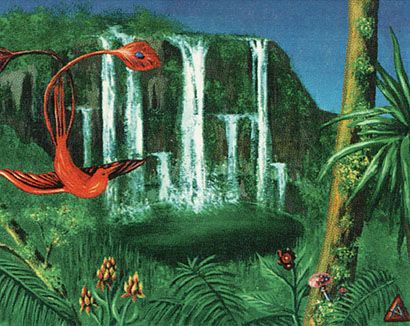
Concordant Crossroads | Illustration by Amy Weber
Reprints are an important facet of the MTG hobby. They keep card prices low on the secondary market, which in turn lowers the barrier for entry to more and more complex formats. With Masters sets we even have the opportunity to draft a pool of cards from Magic’s history that wouldn’t otherwise interact.
Without Chronicles we wouldn’t have the Reserved List, and without the Reserved List cards would devalue like mad immediately after their first reprint. The entire concept of collecting the cards would fall apart.
What do you think? Is Chronicles important to Magic’s history? What are your favorite reprints from Chronicles? Is there anything you think should be removed from the Reserved List? Let me know in the comments or over on Draftsim’s Twitter.
Thanks for reading and have fun collecting!
Note: this post contains affiliate links. If you use these links to make a purchase, you’ll help Draftsim continue to provide awesome free articles and apps.
Follow Draftsim for awesome articles and set updates:


Add Comment